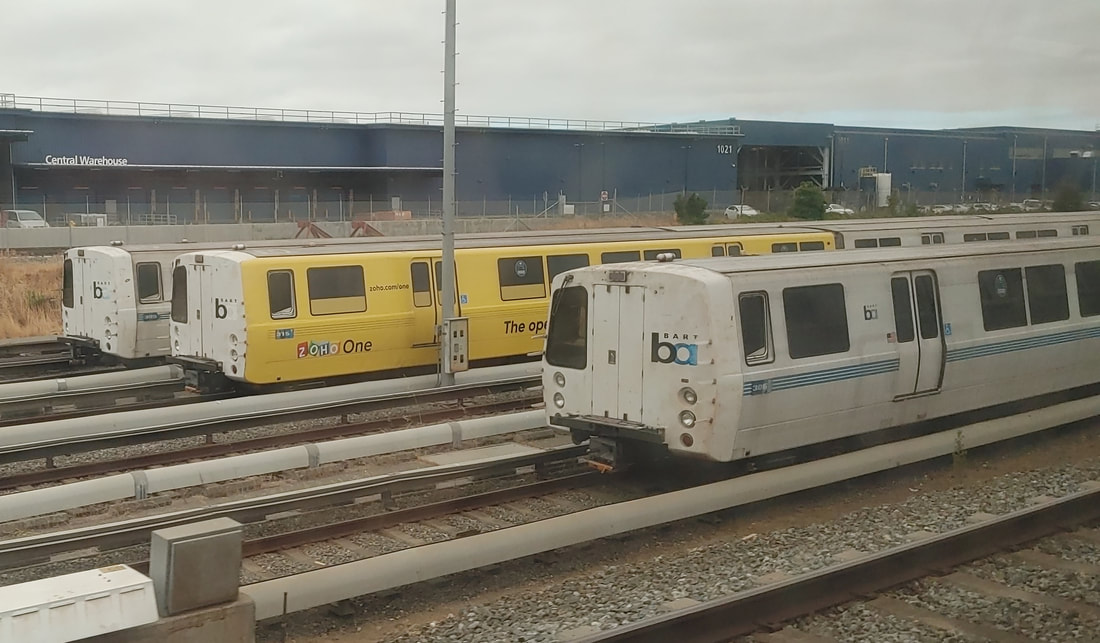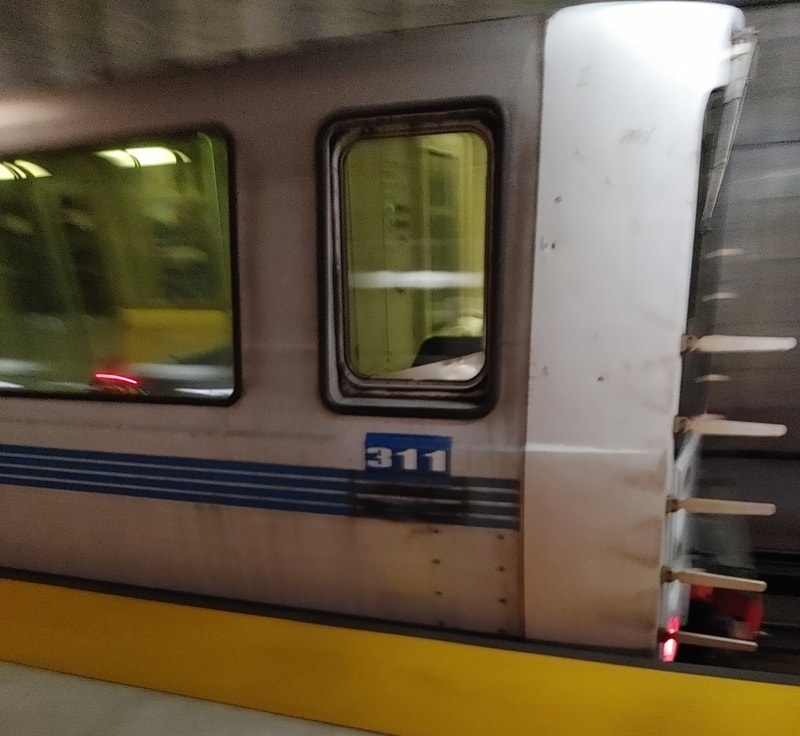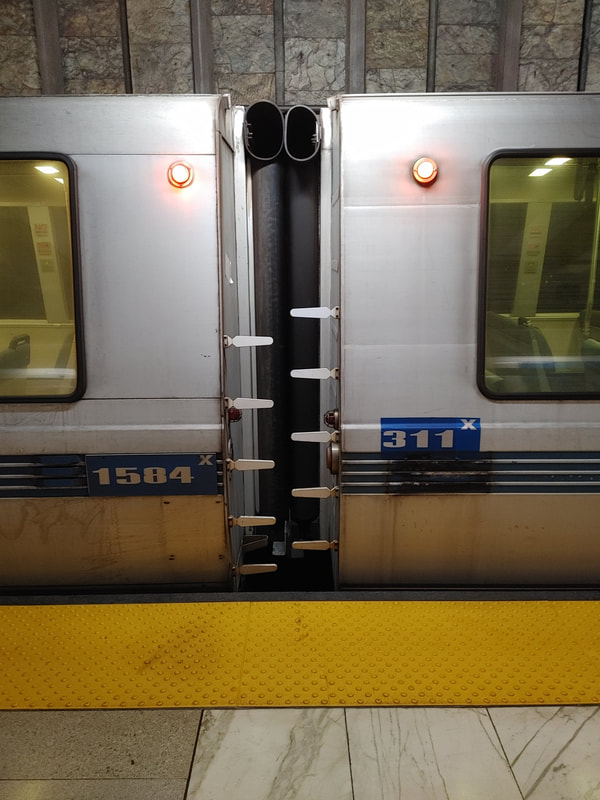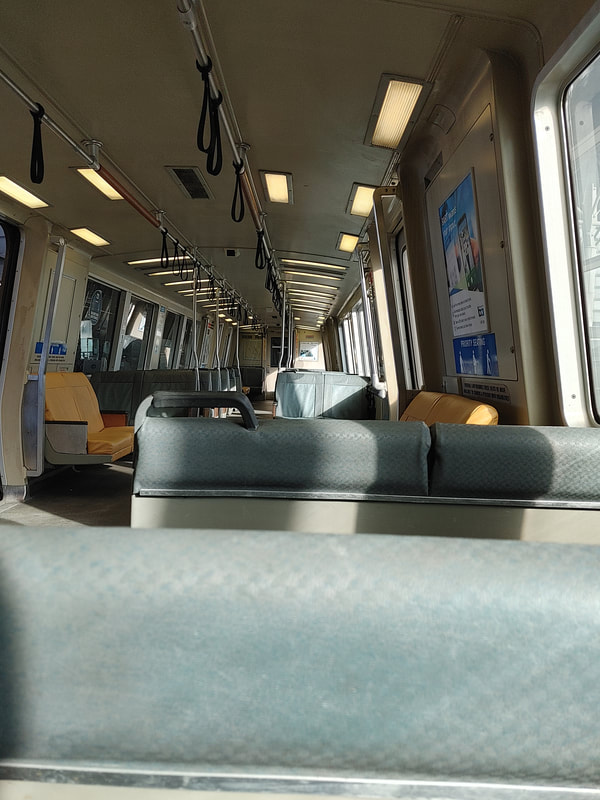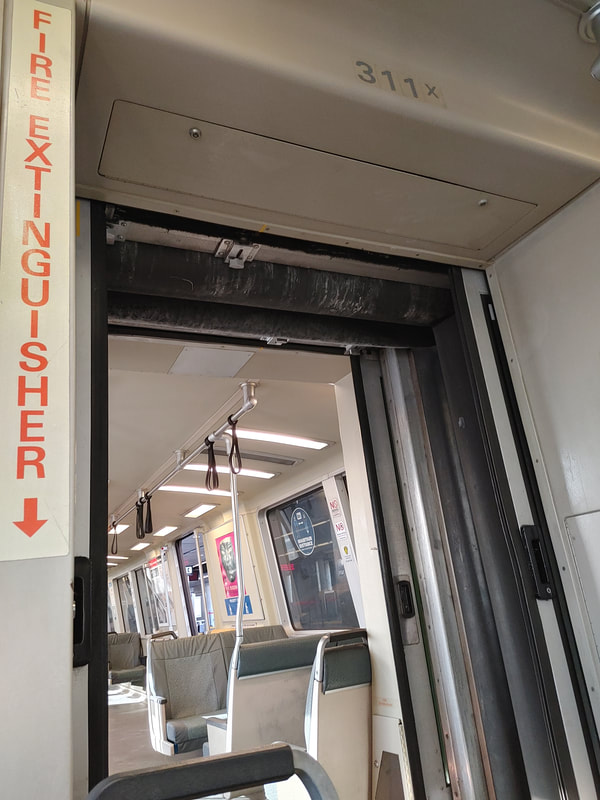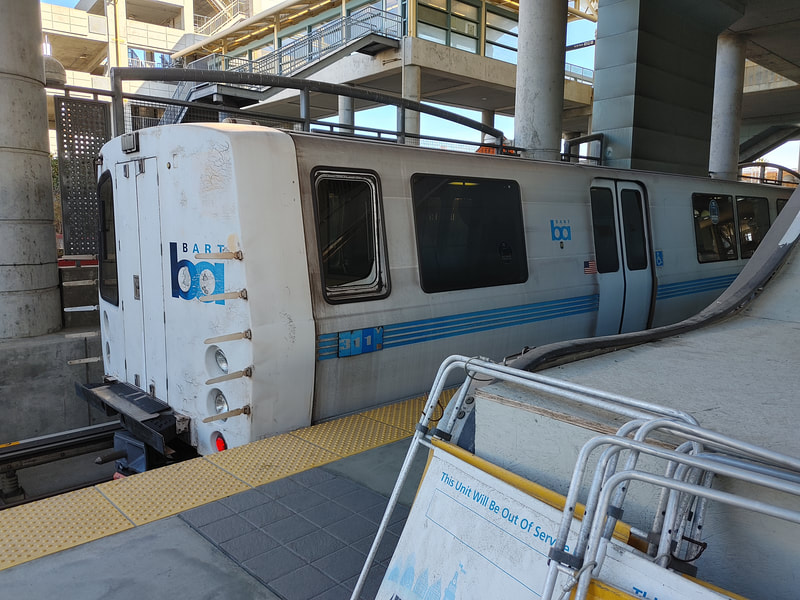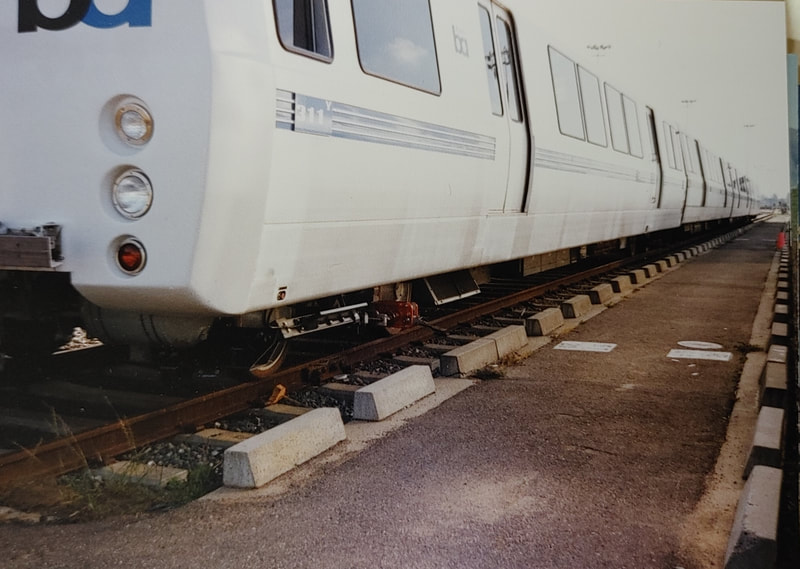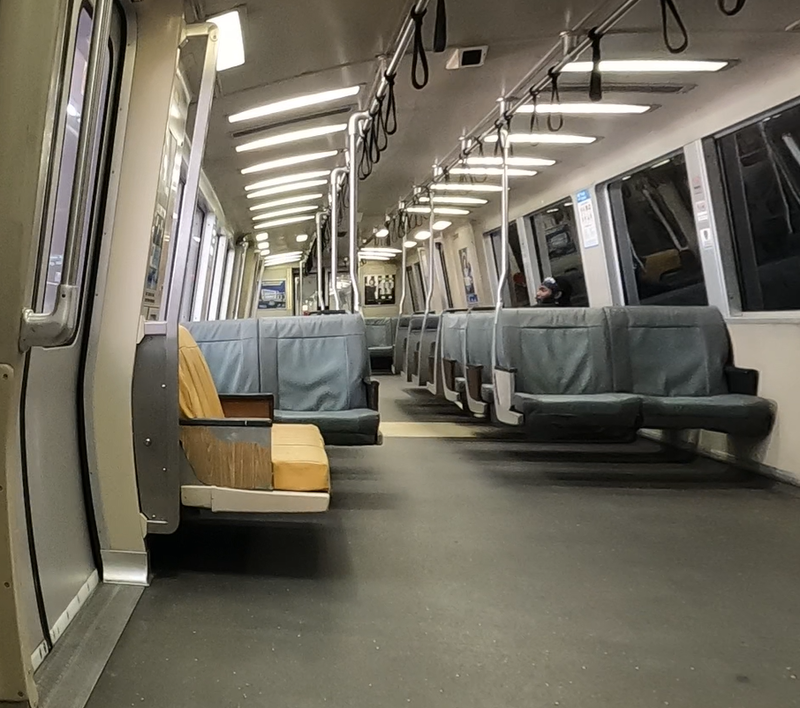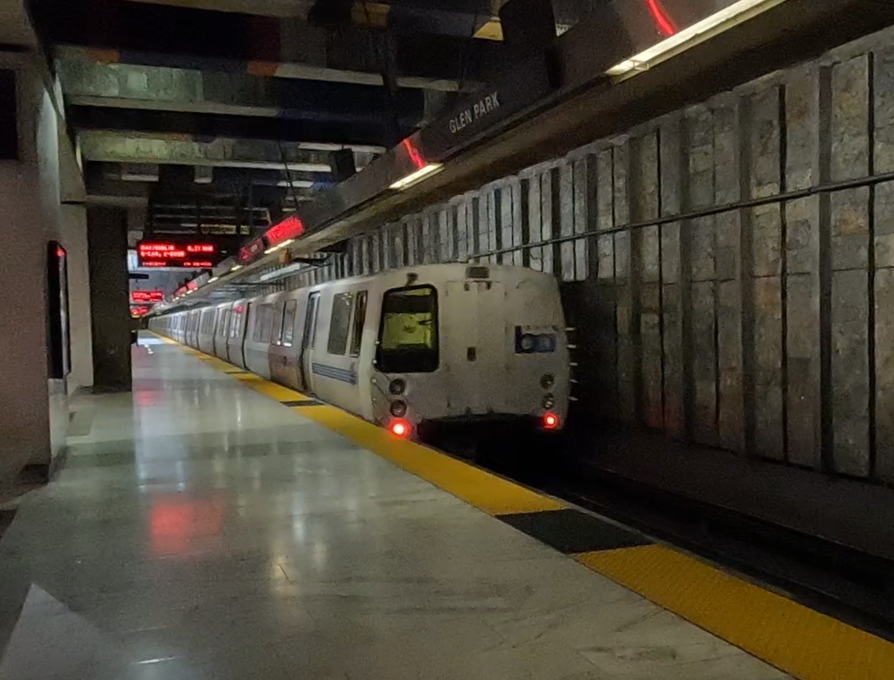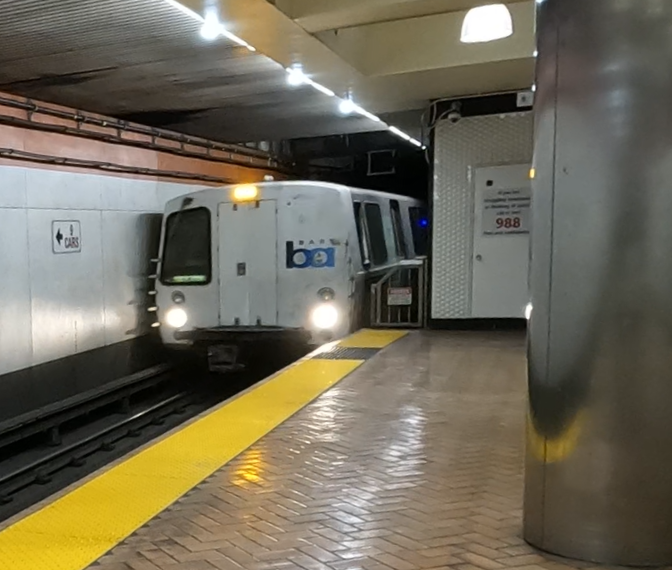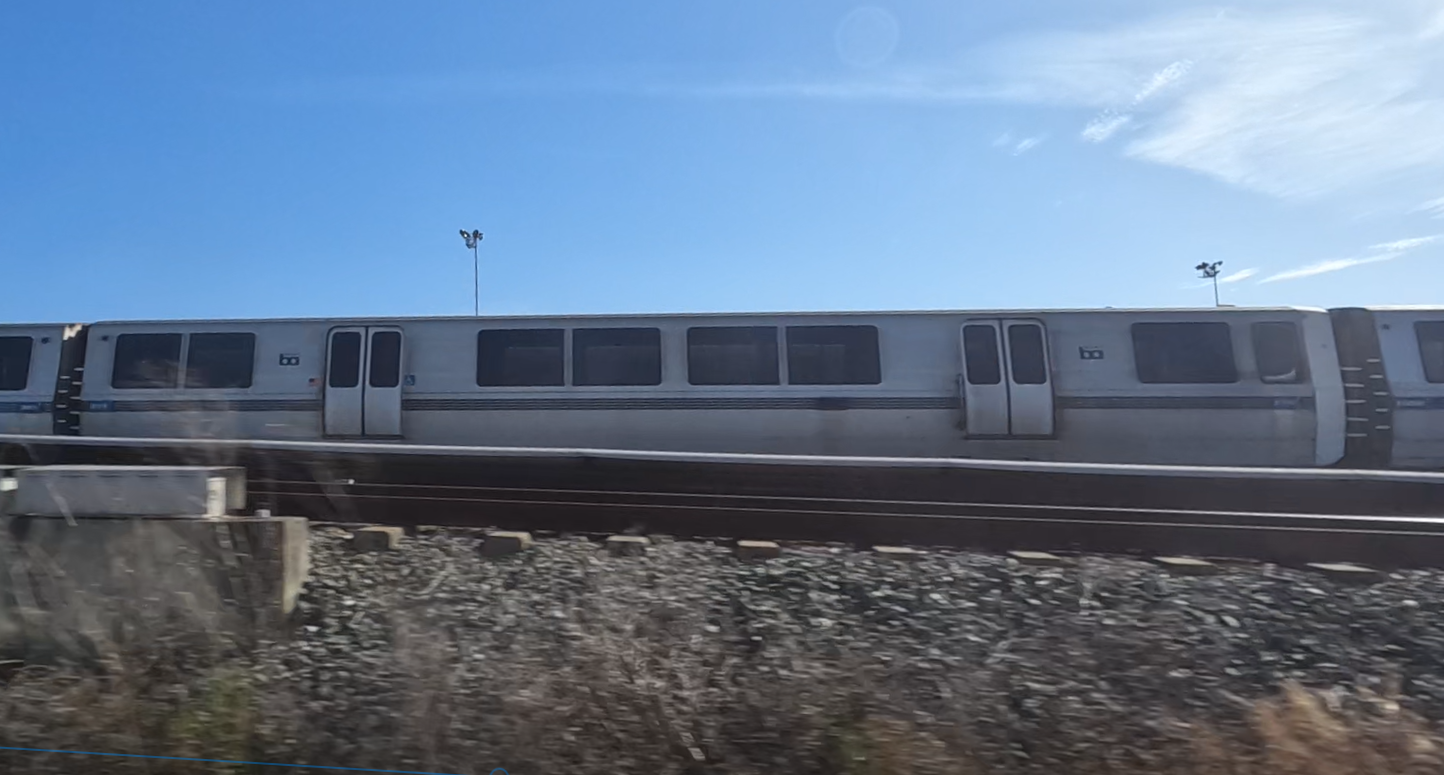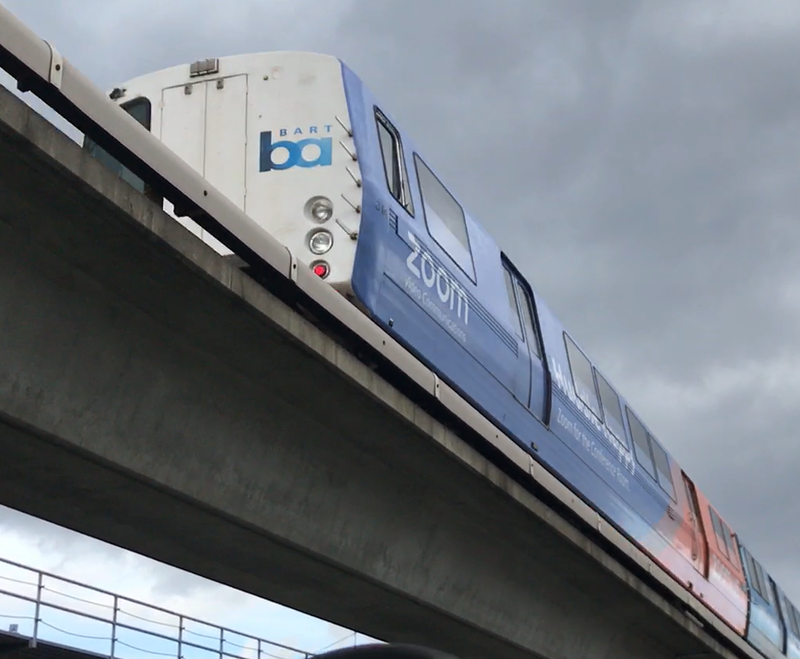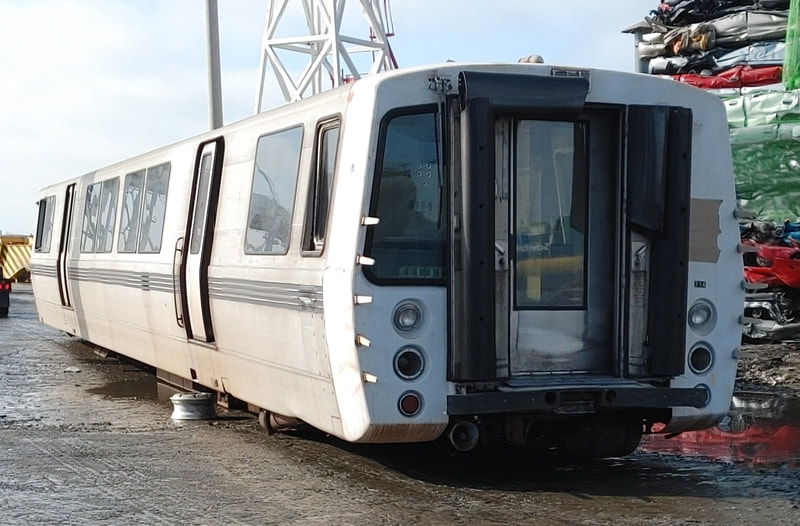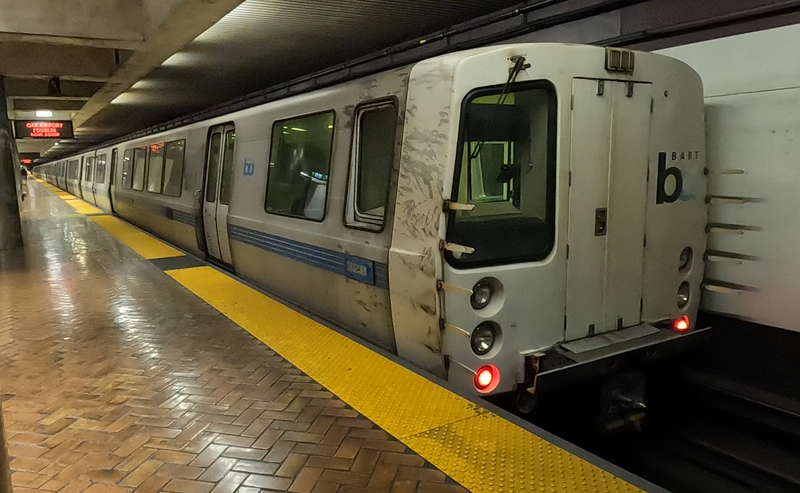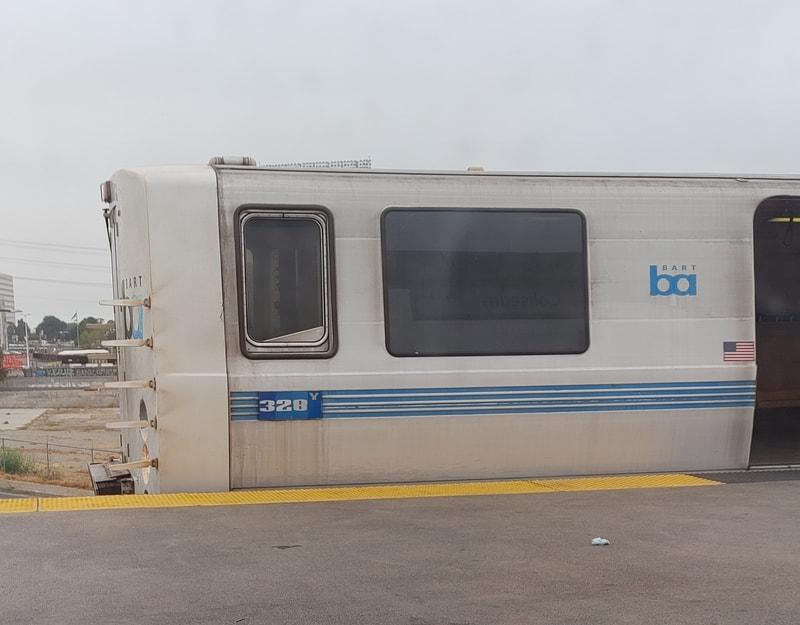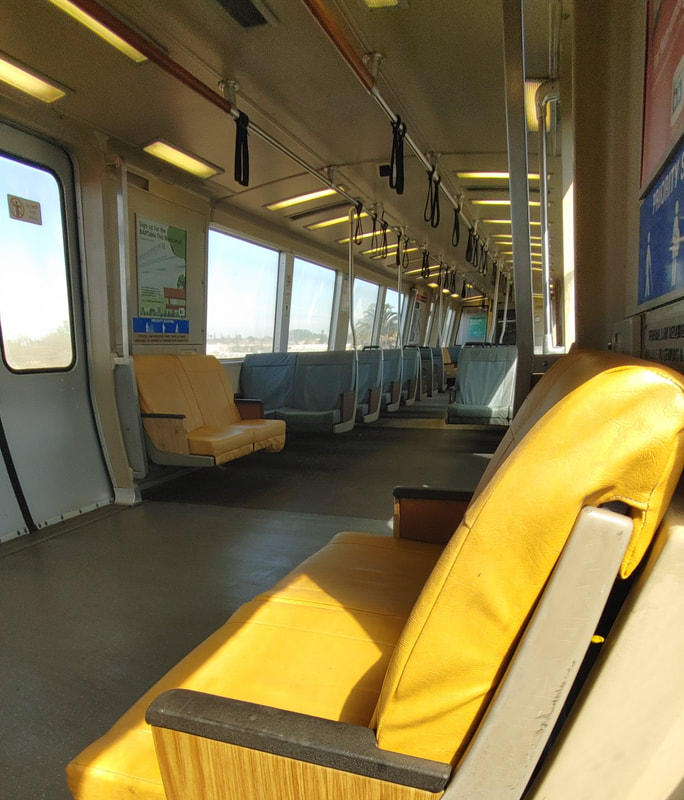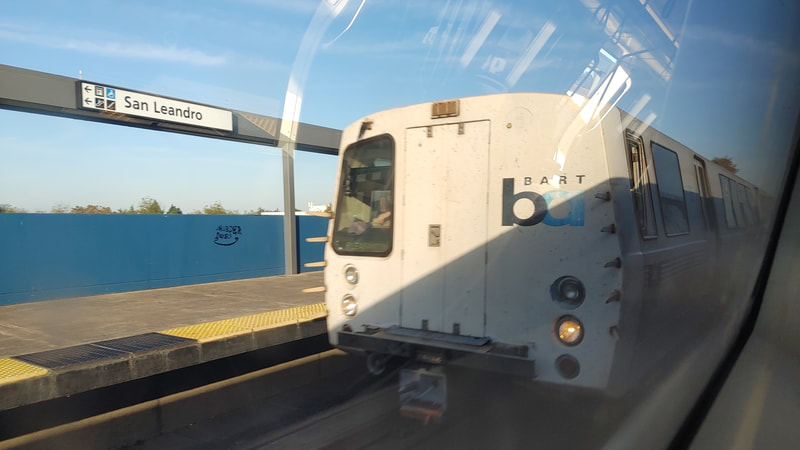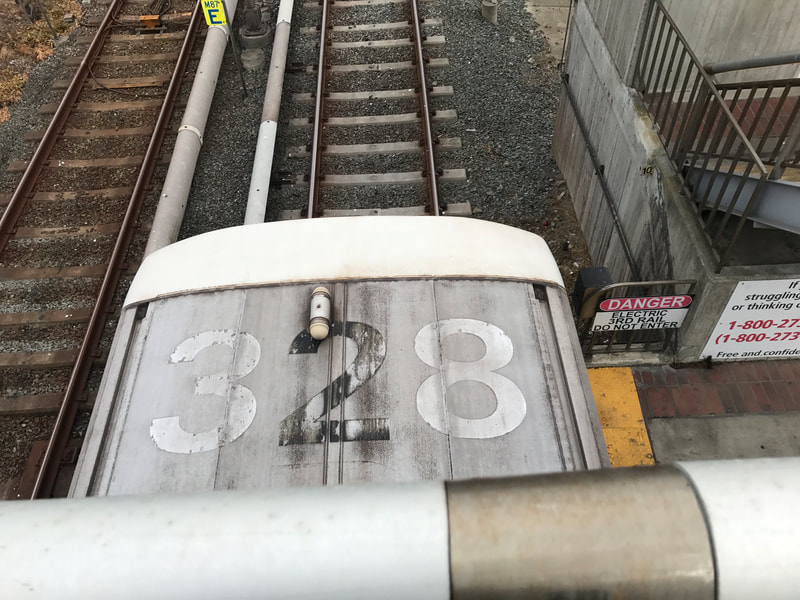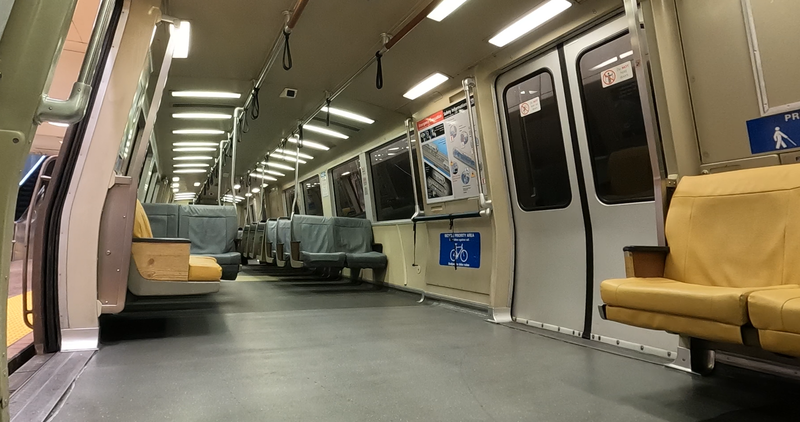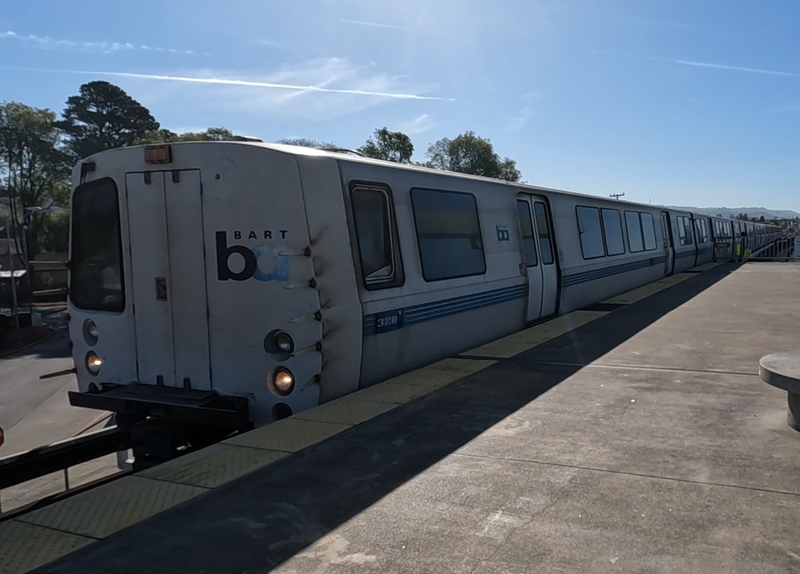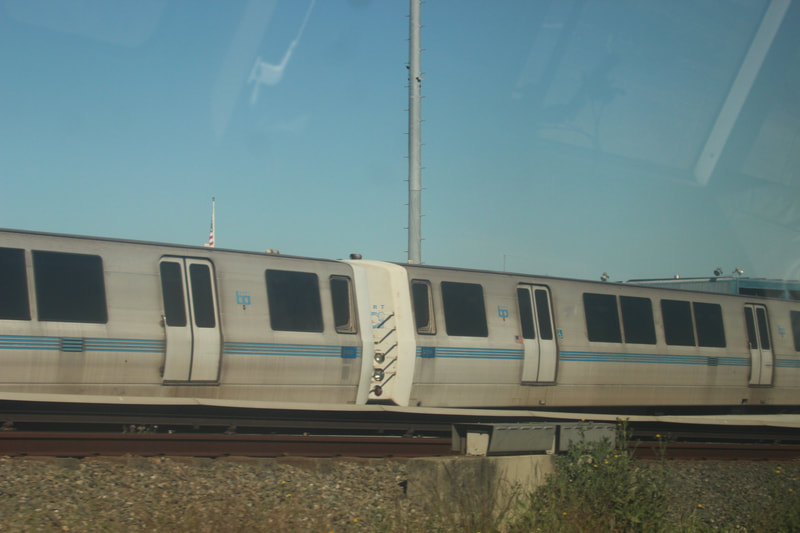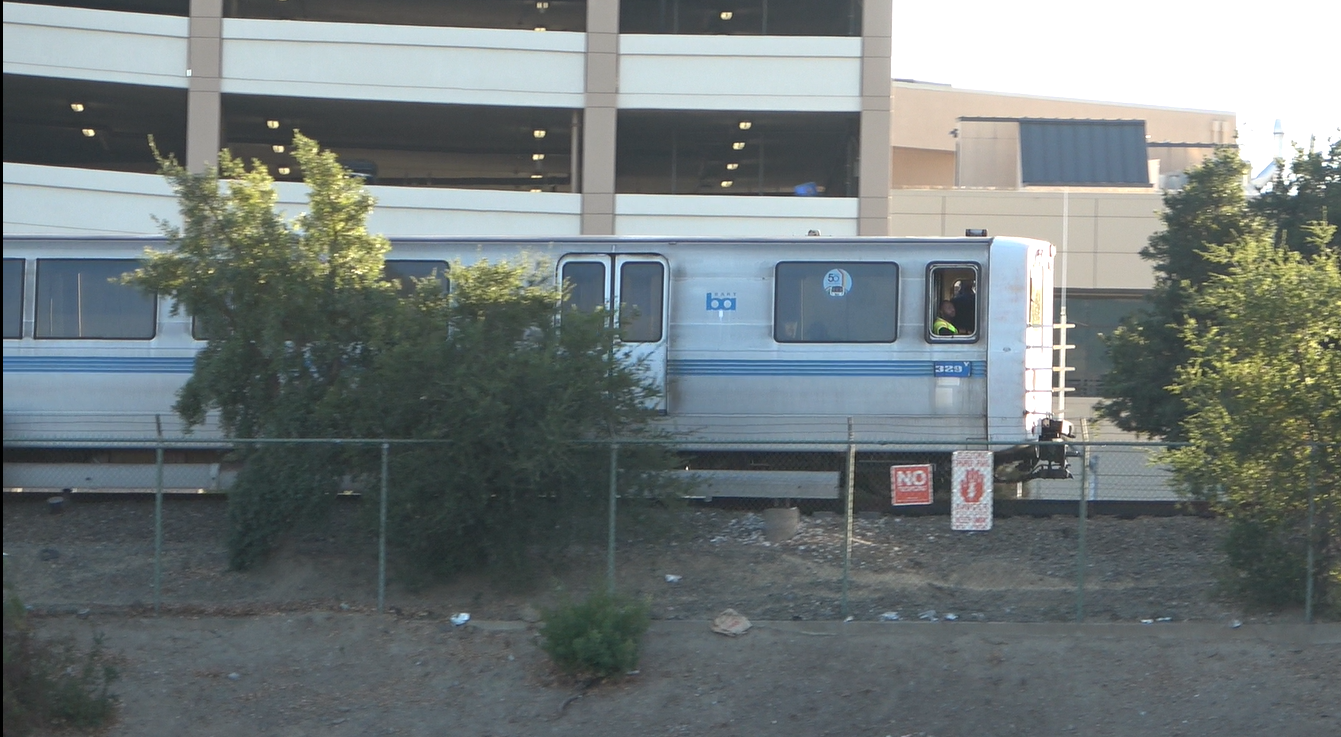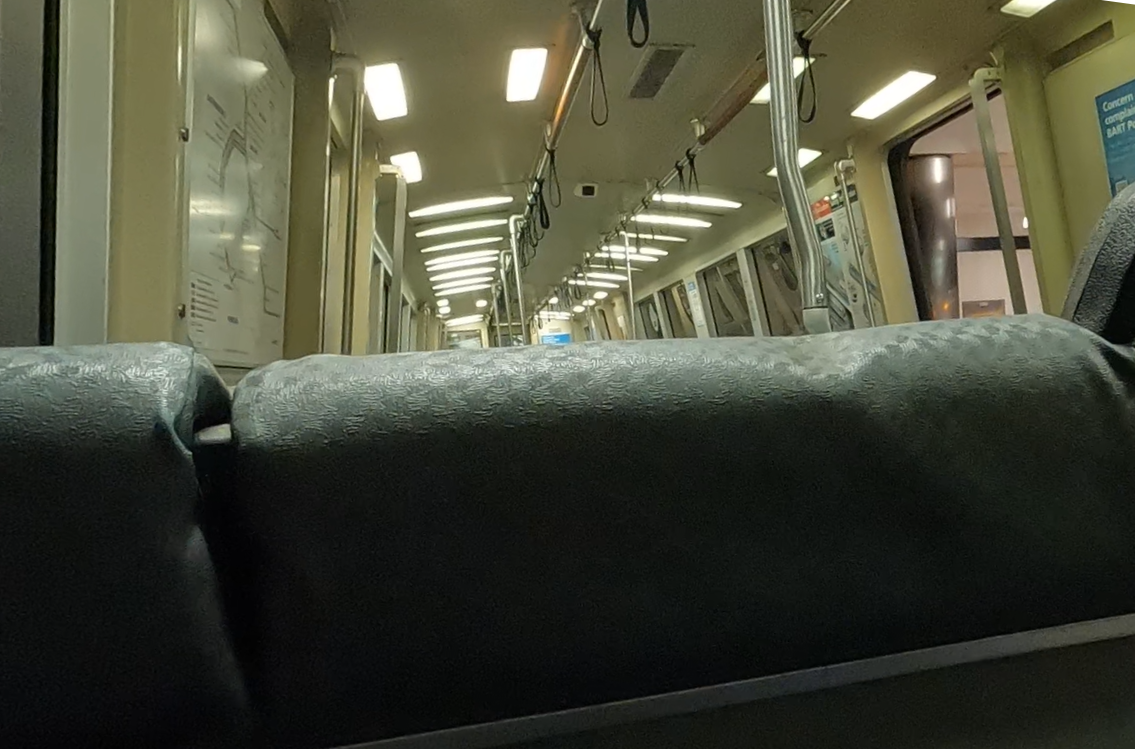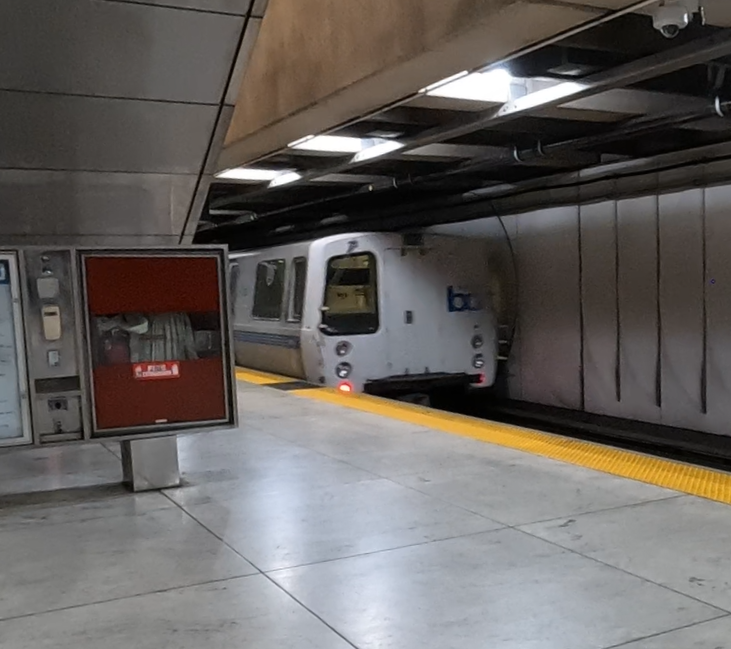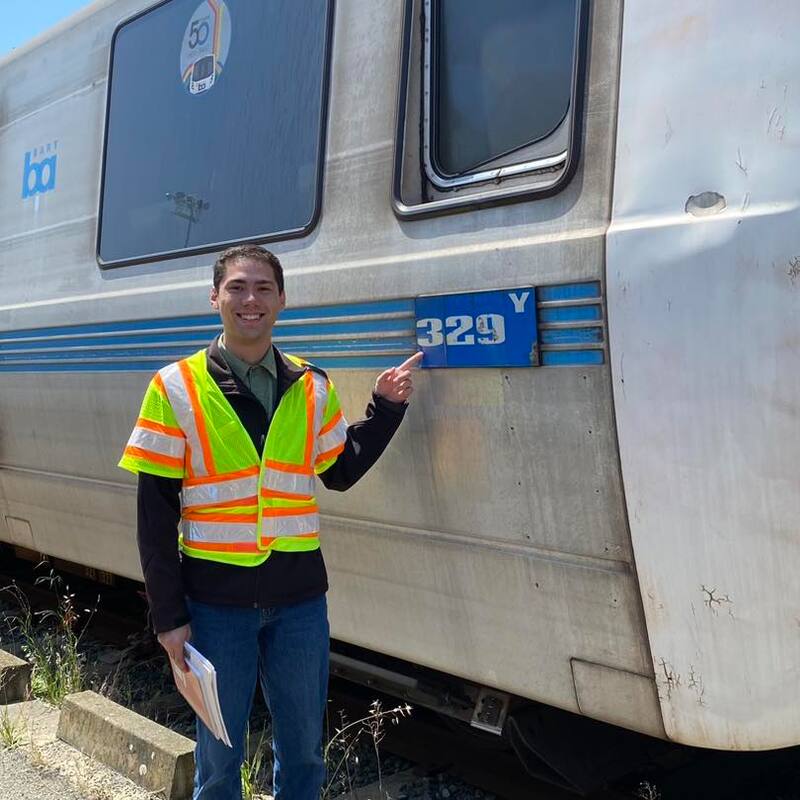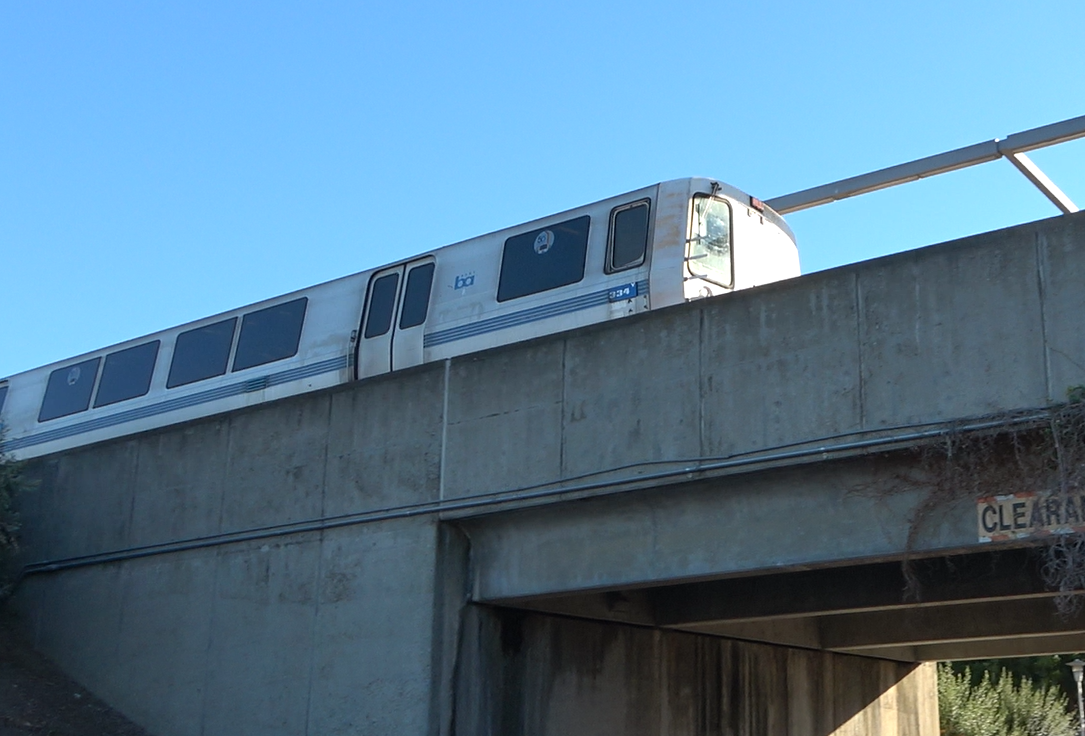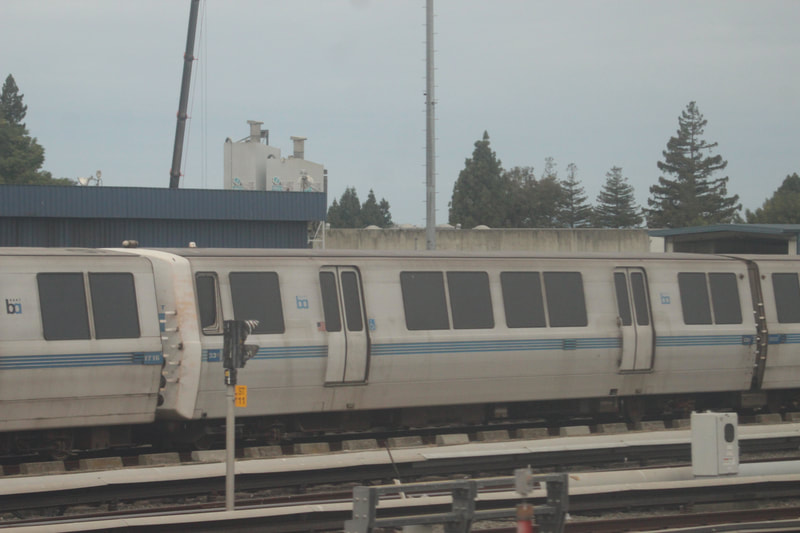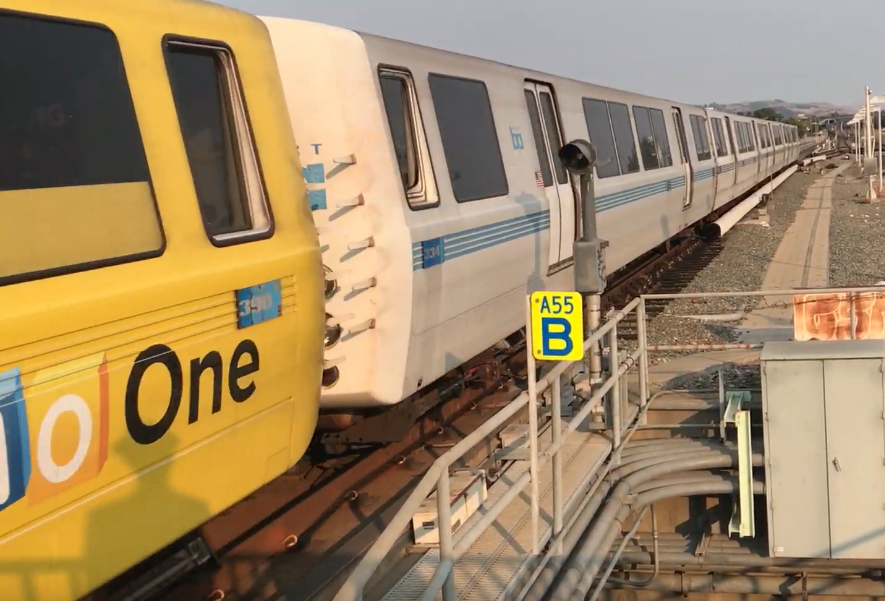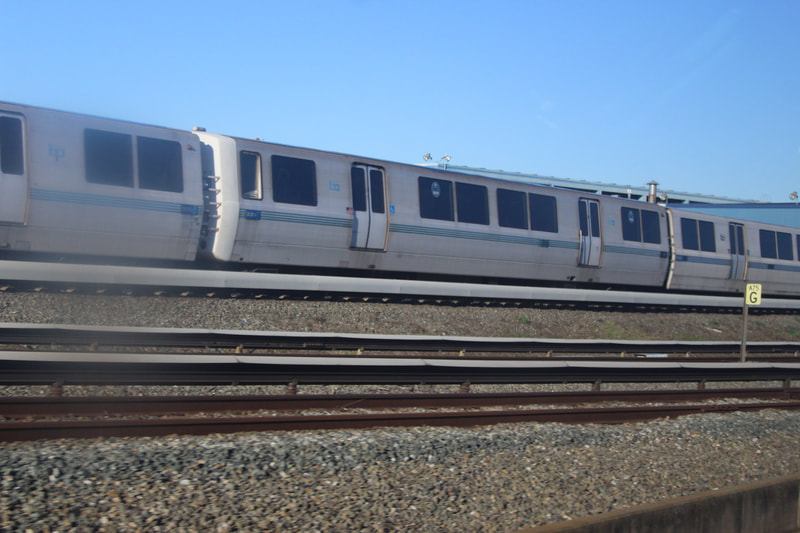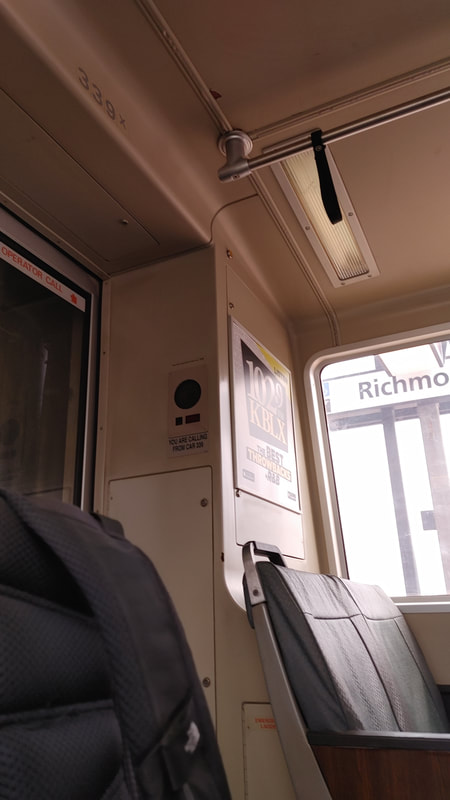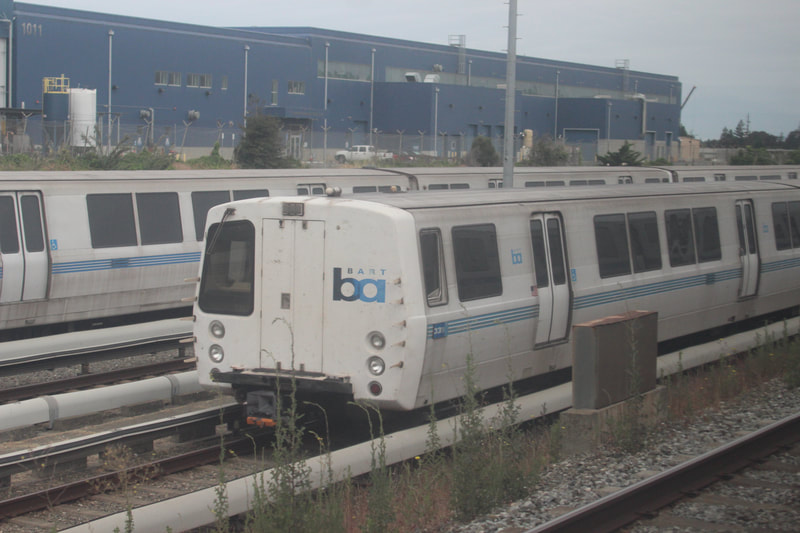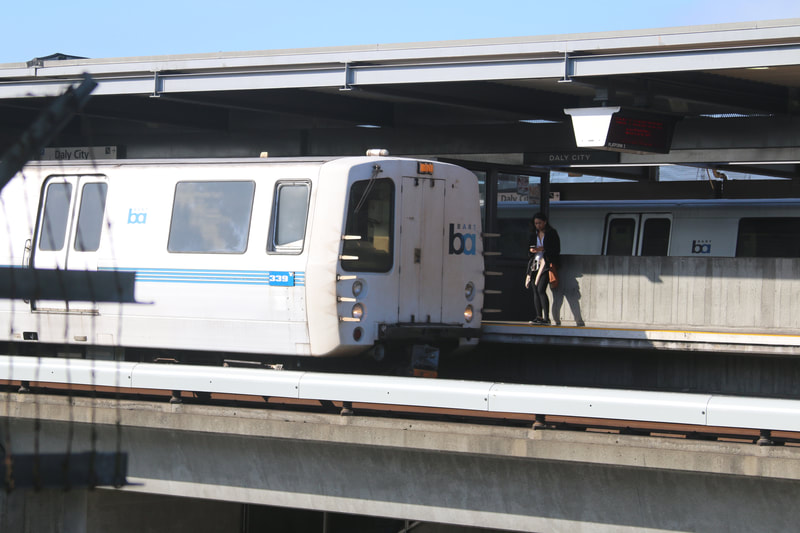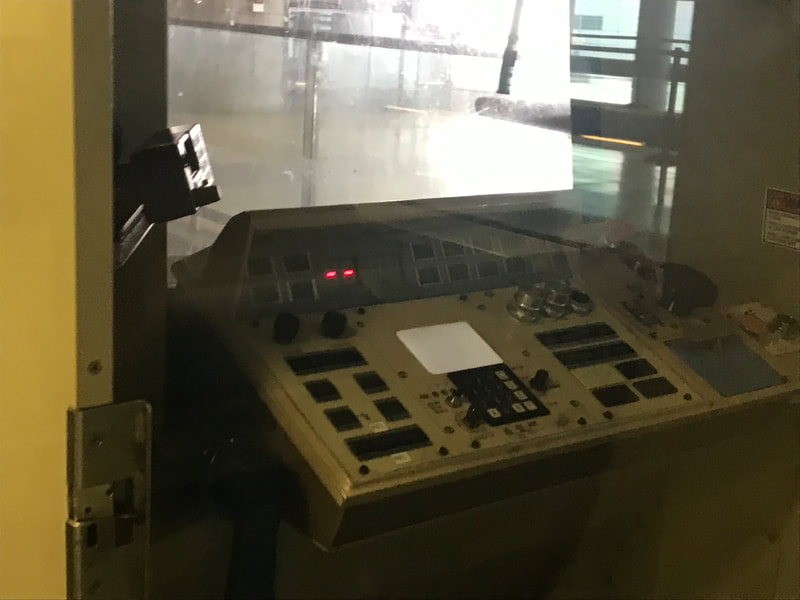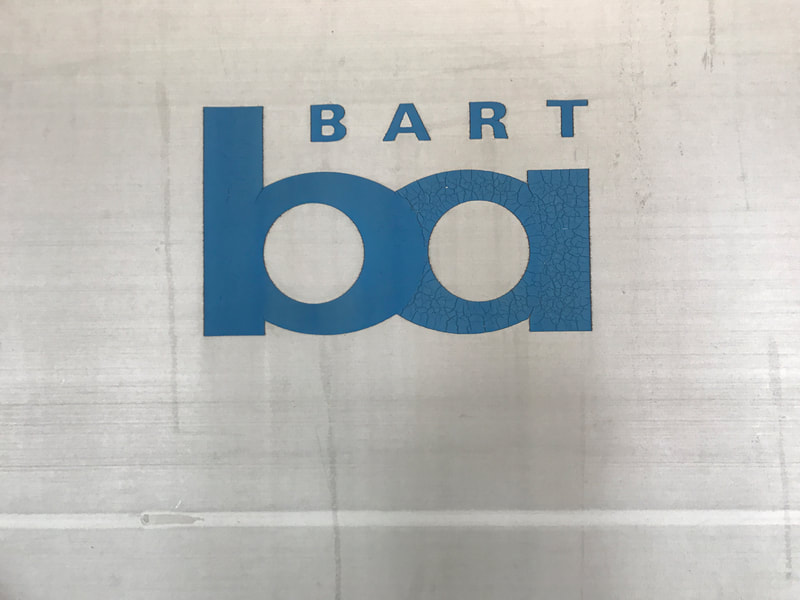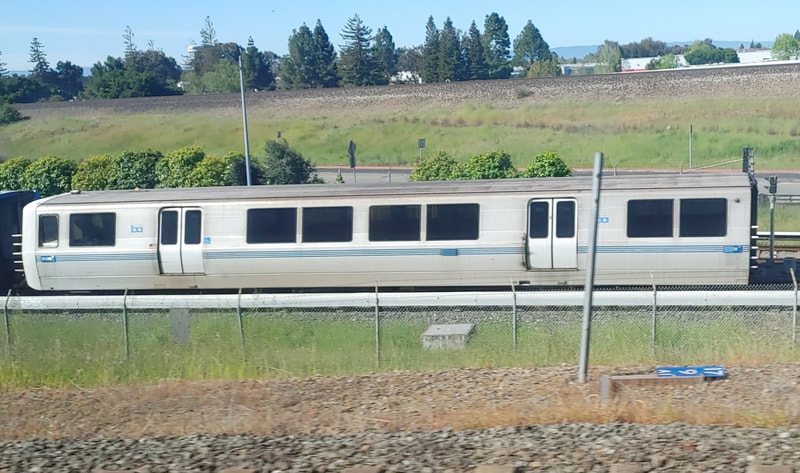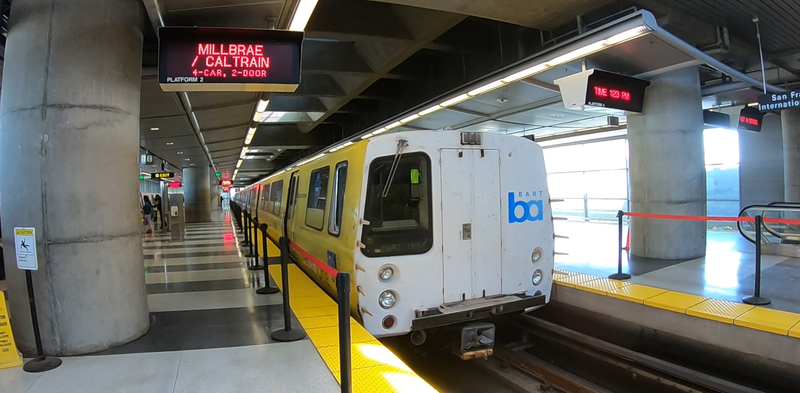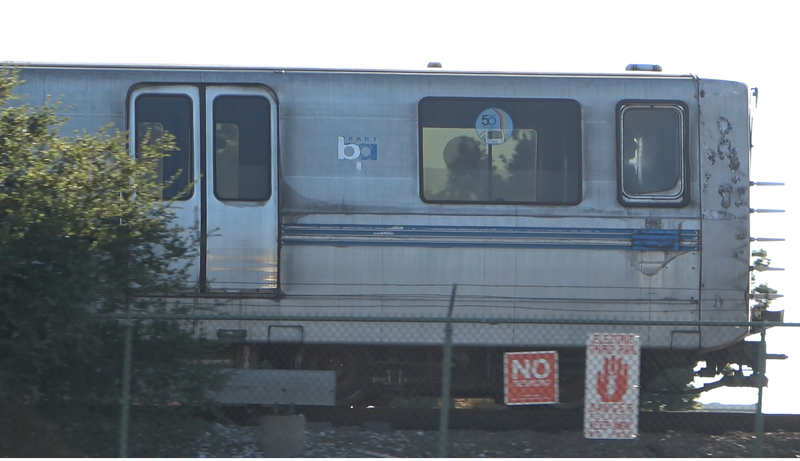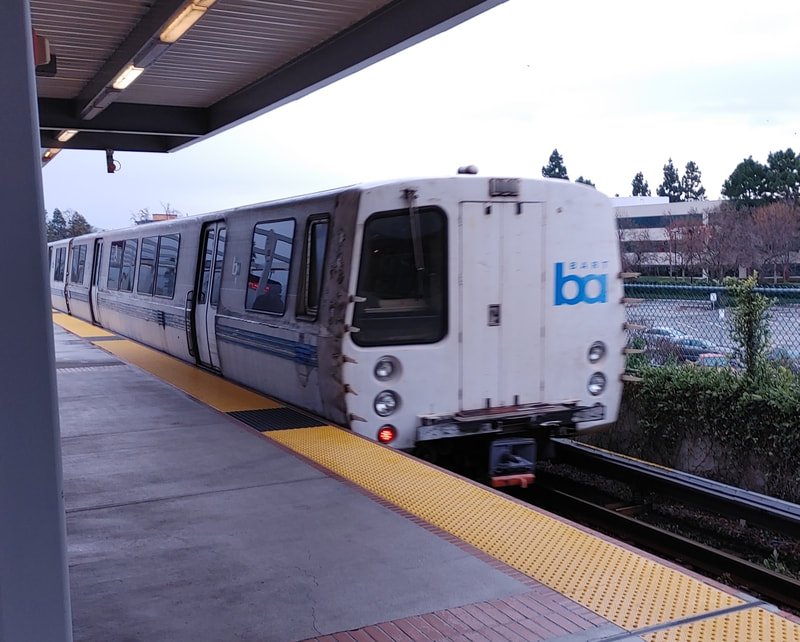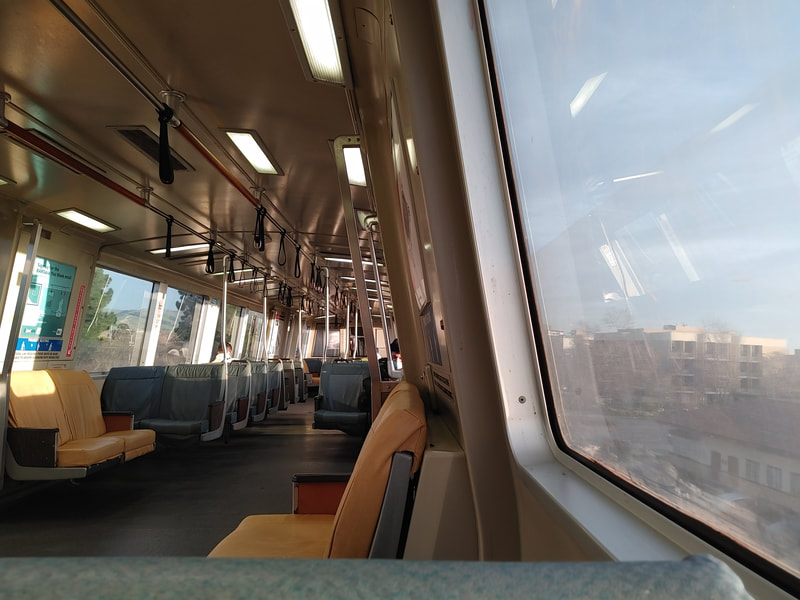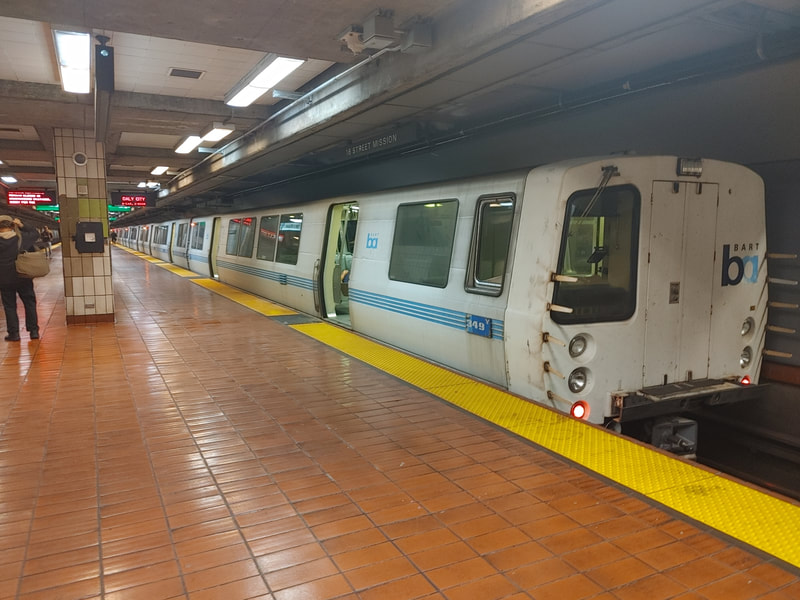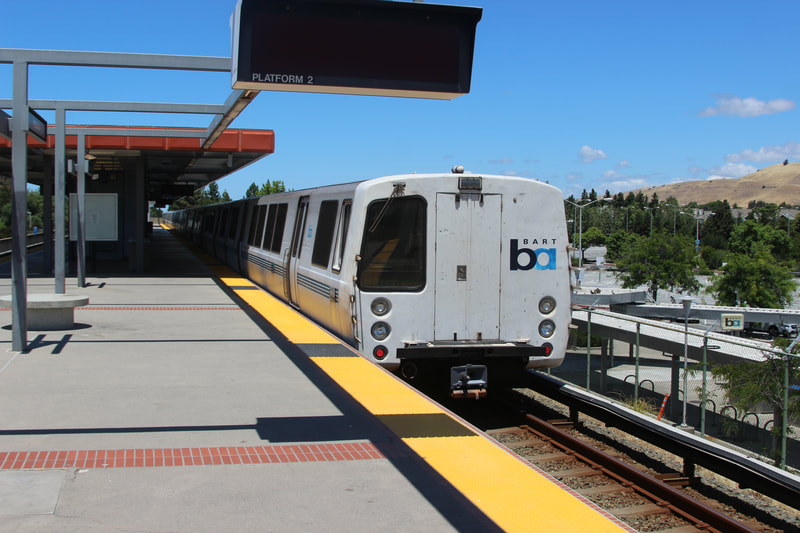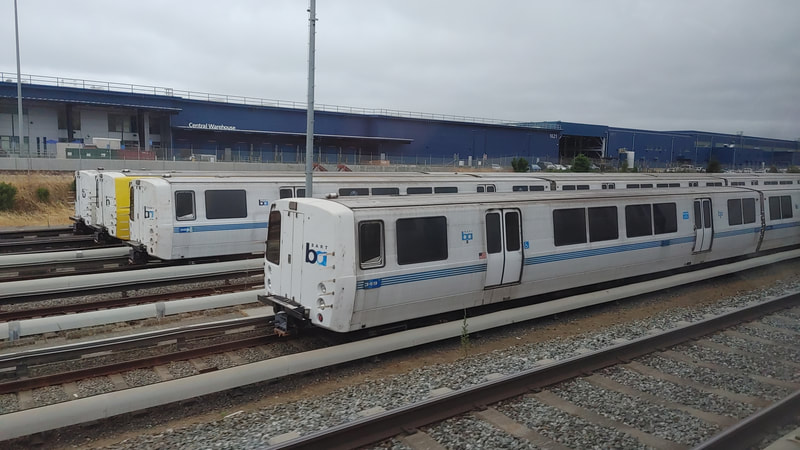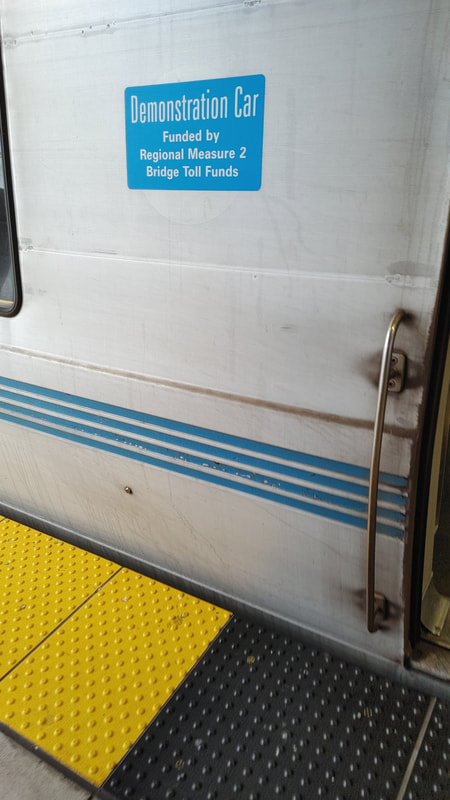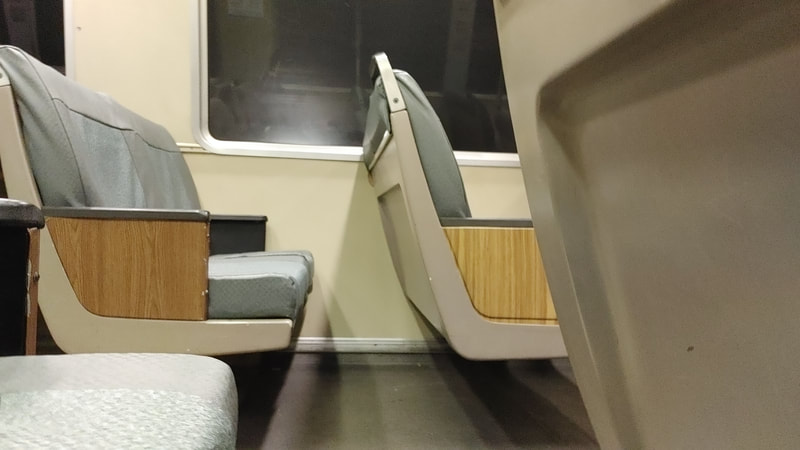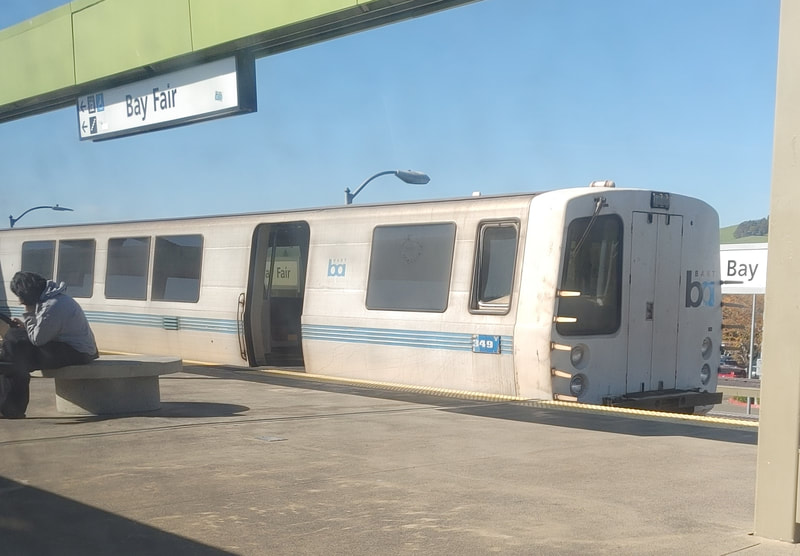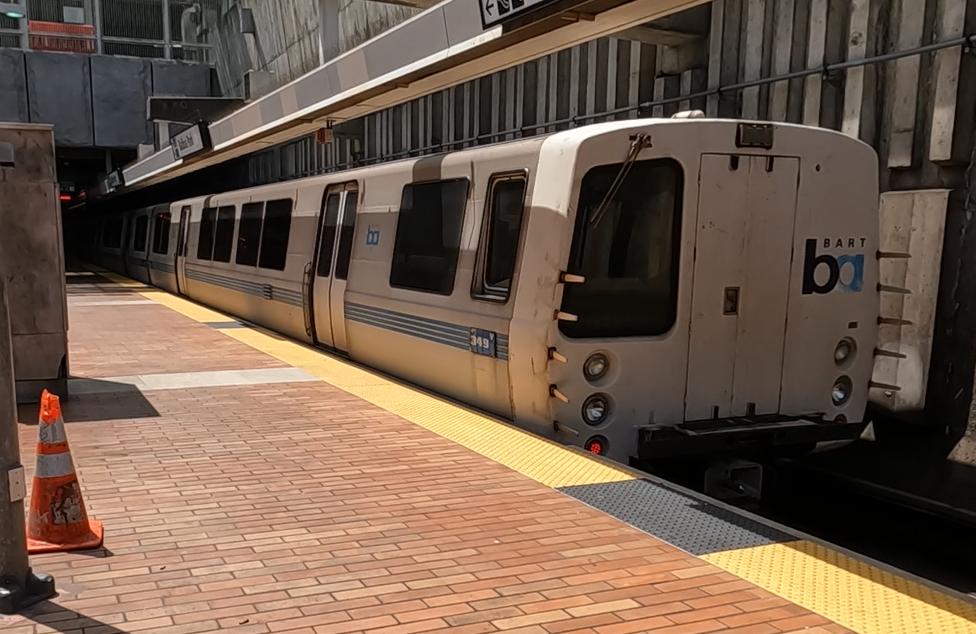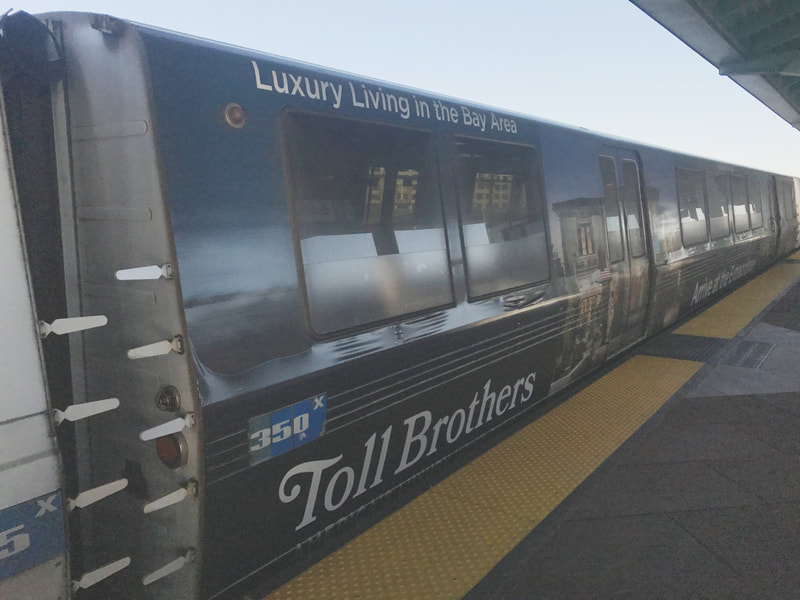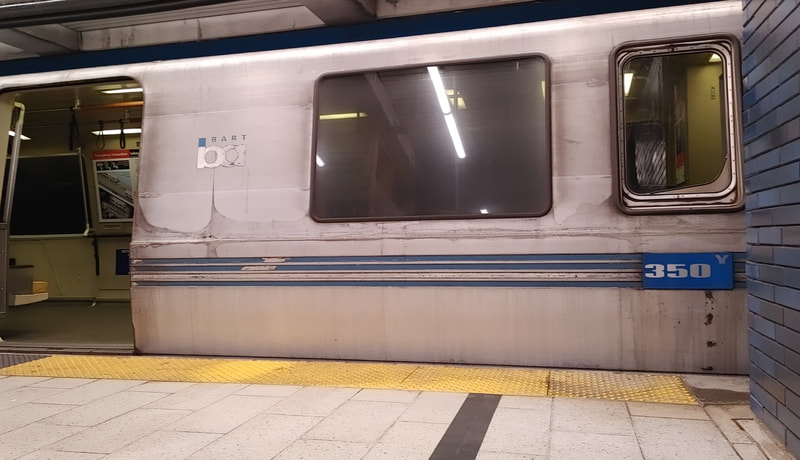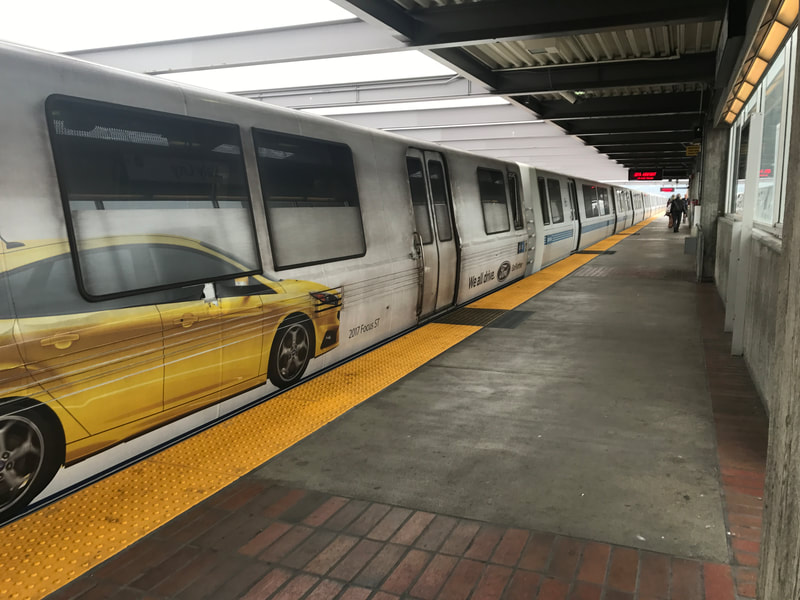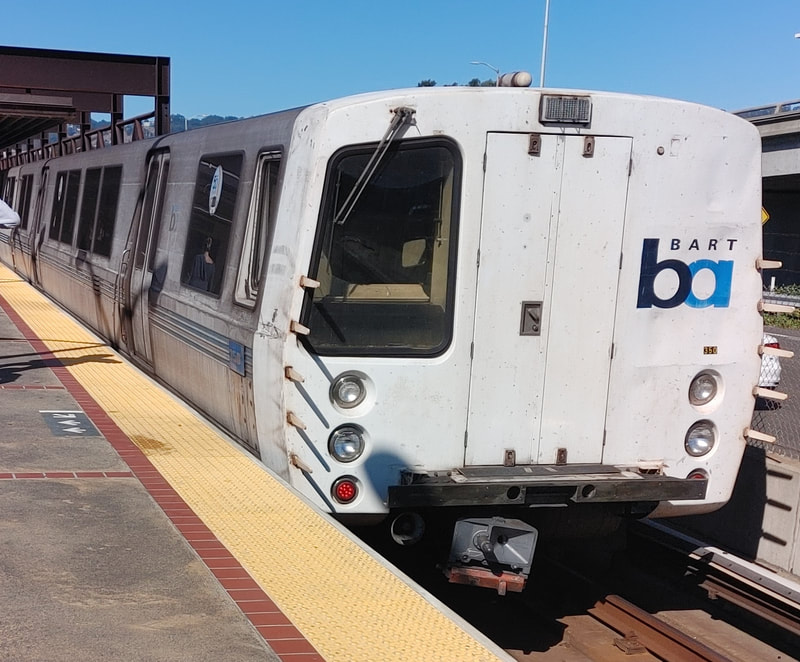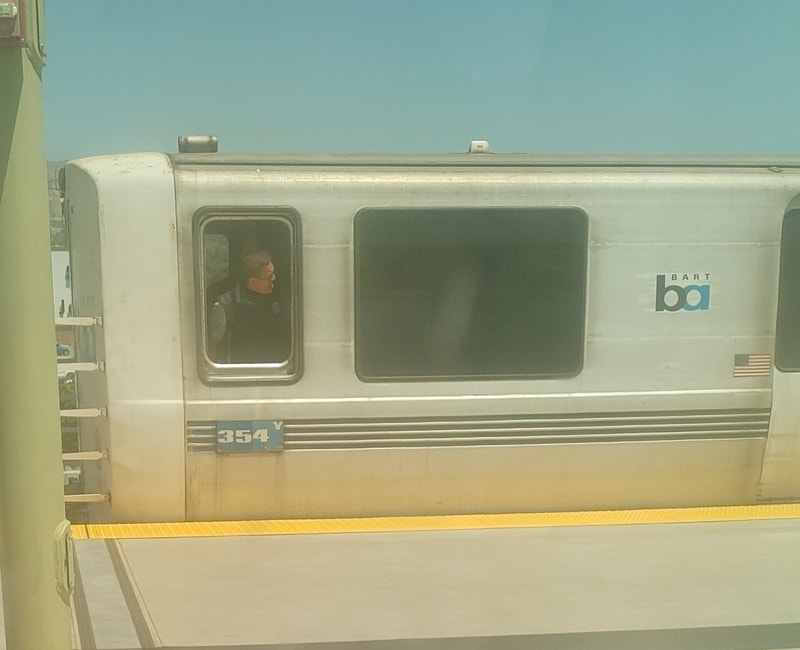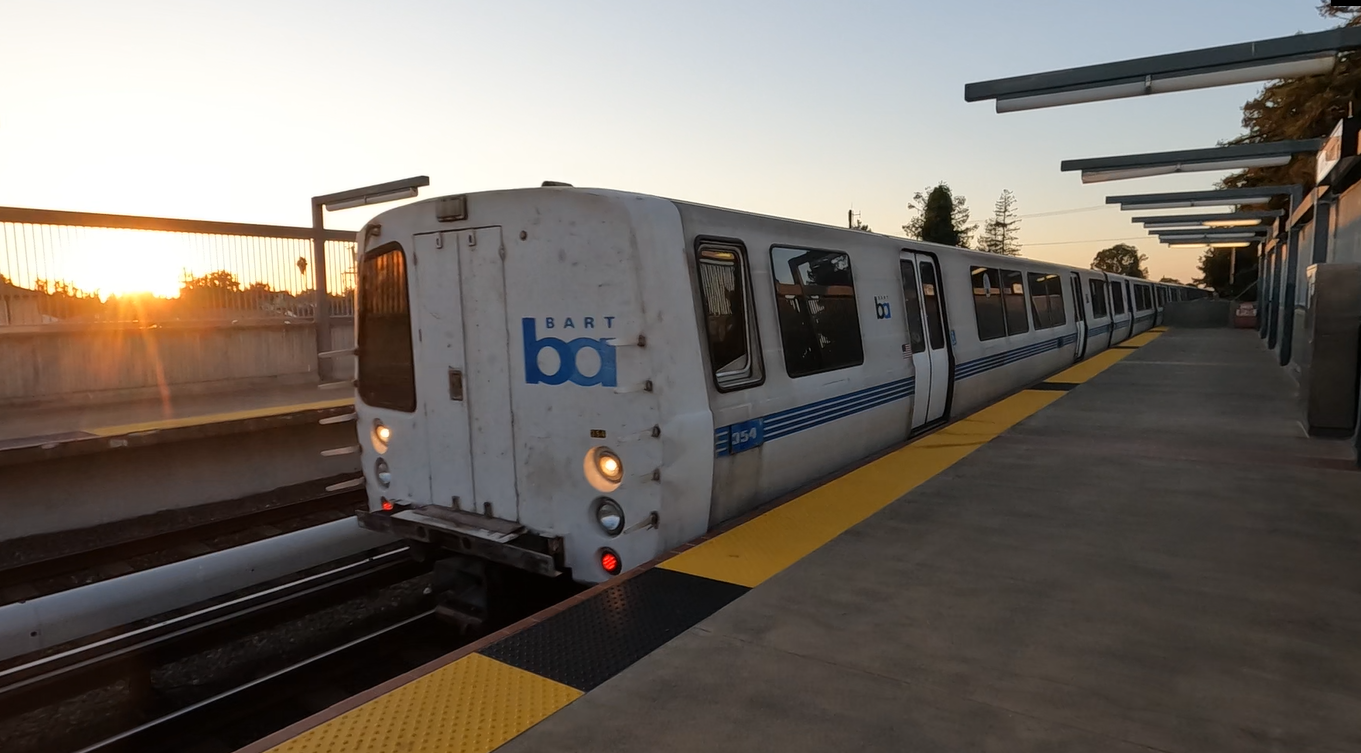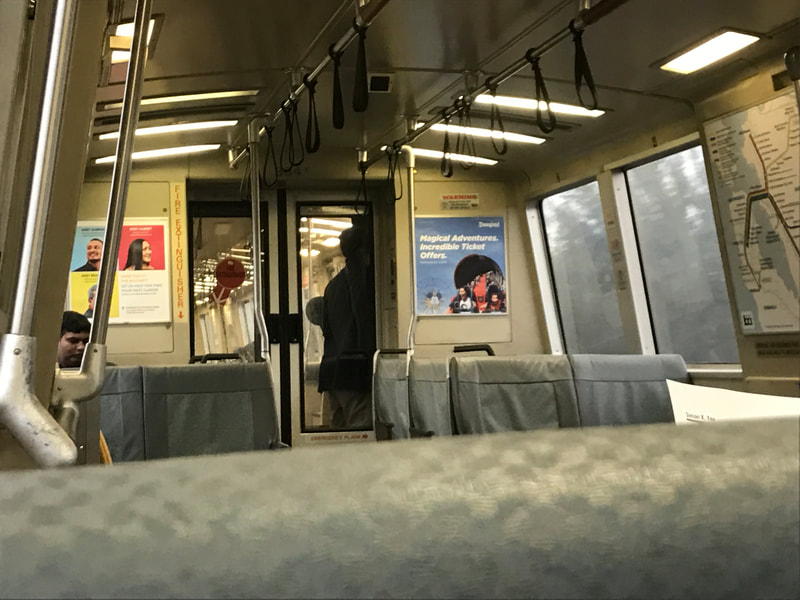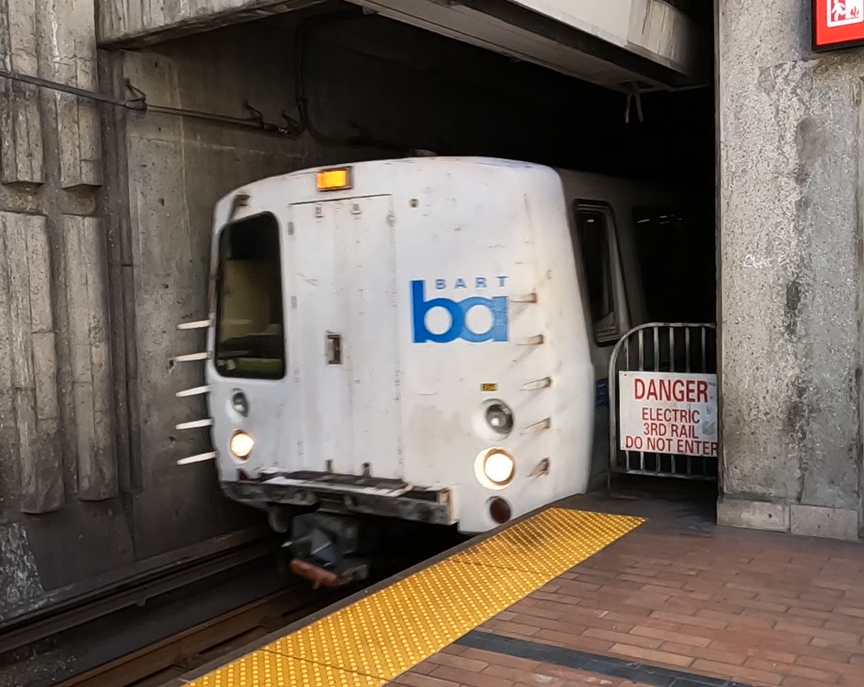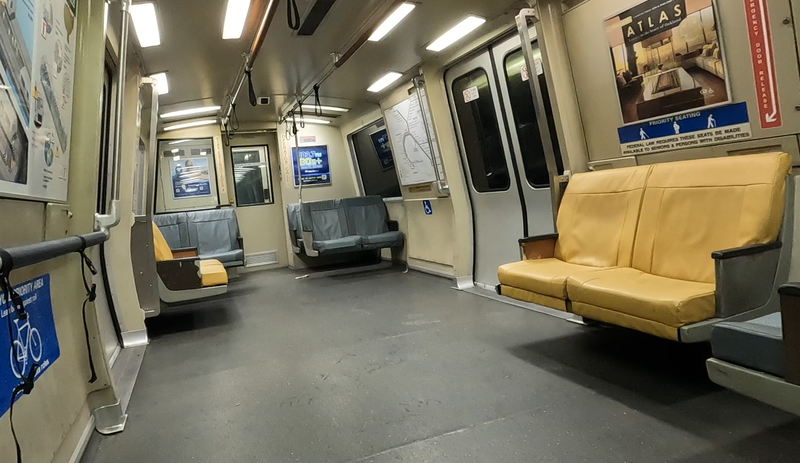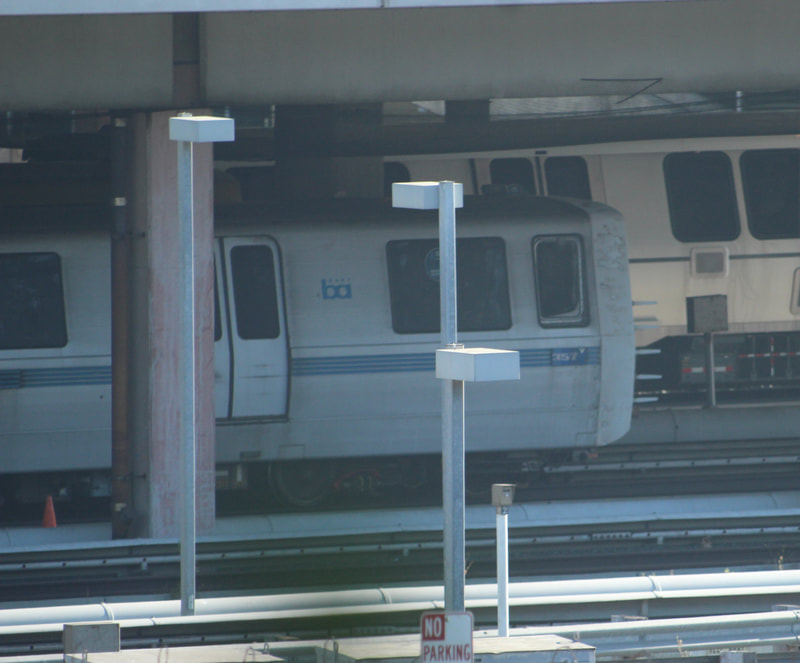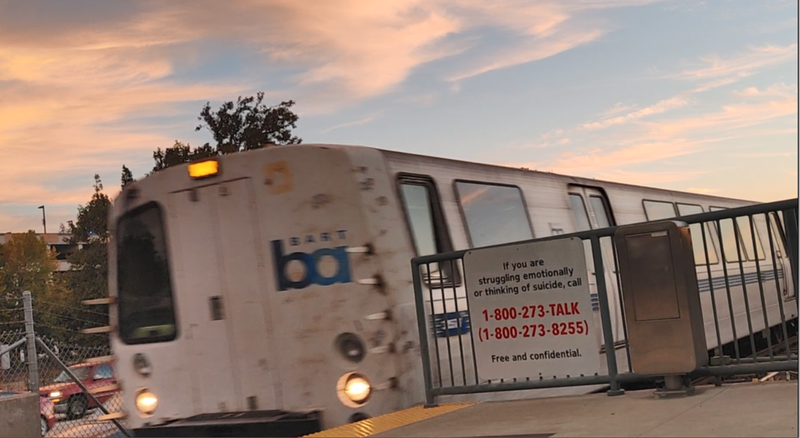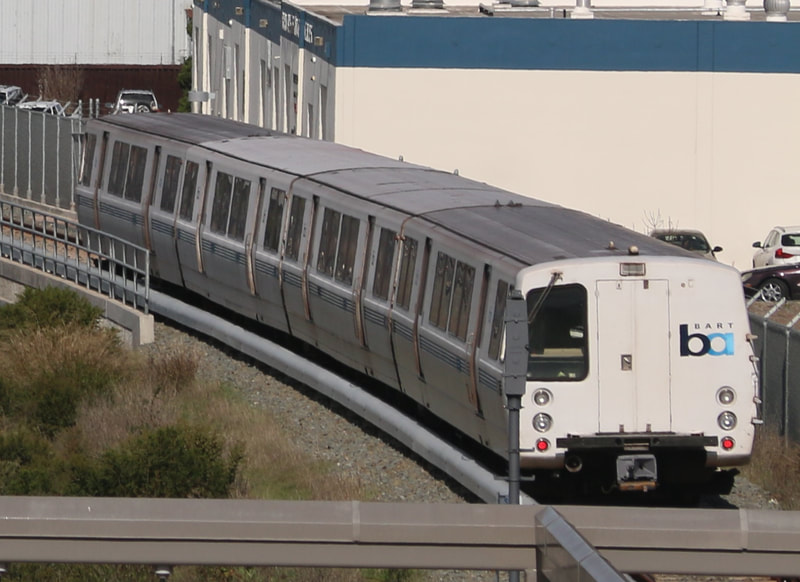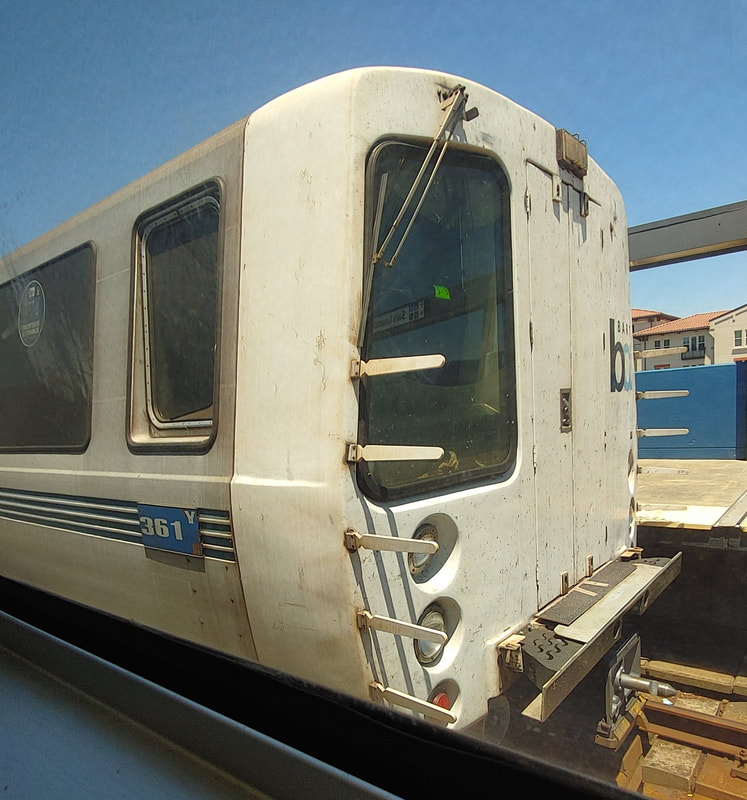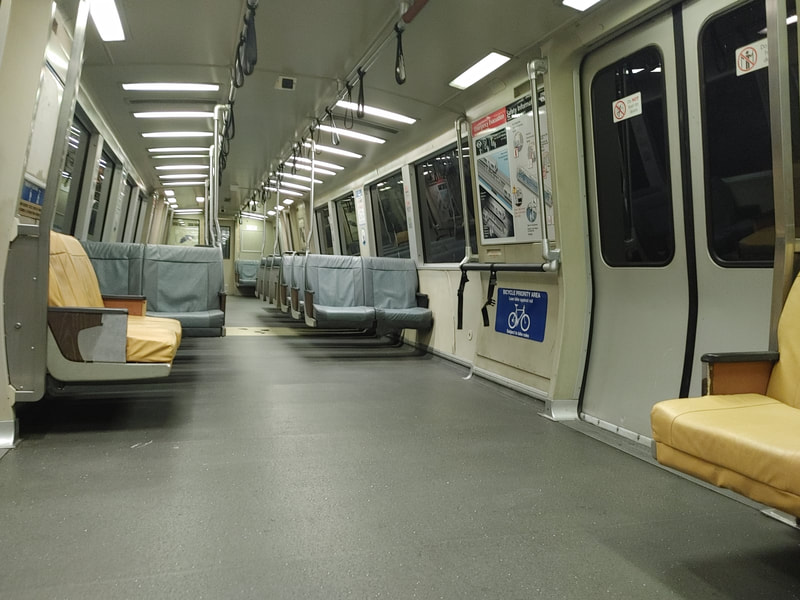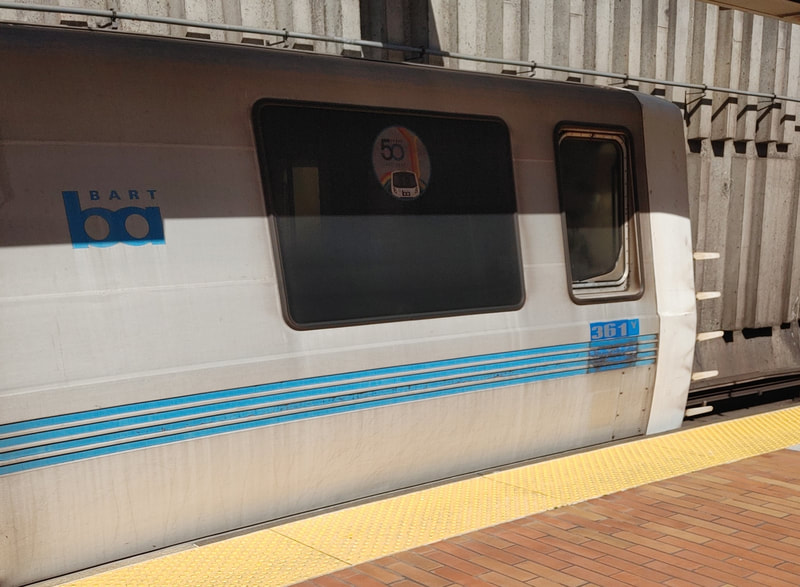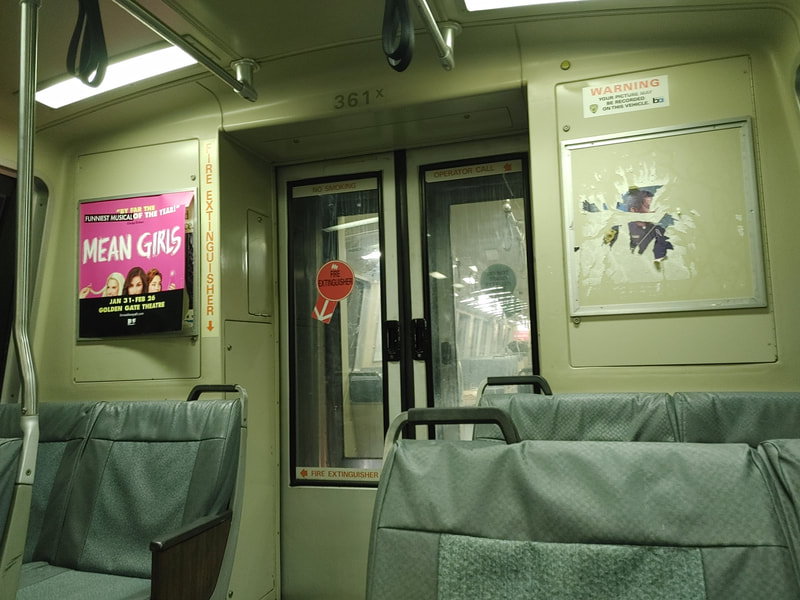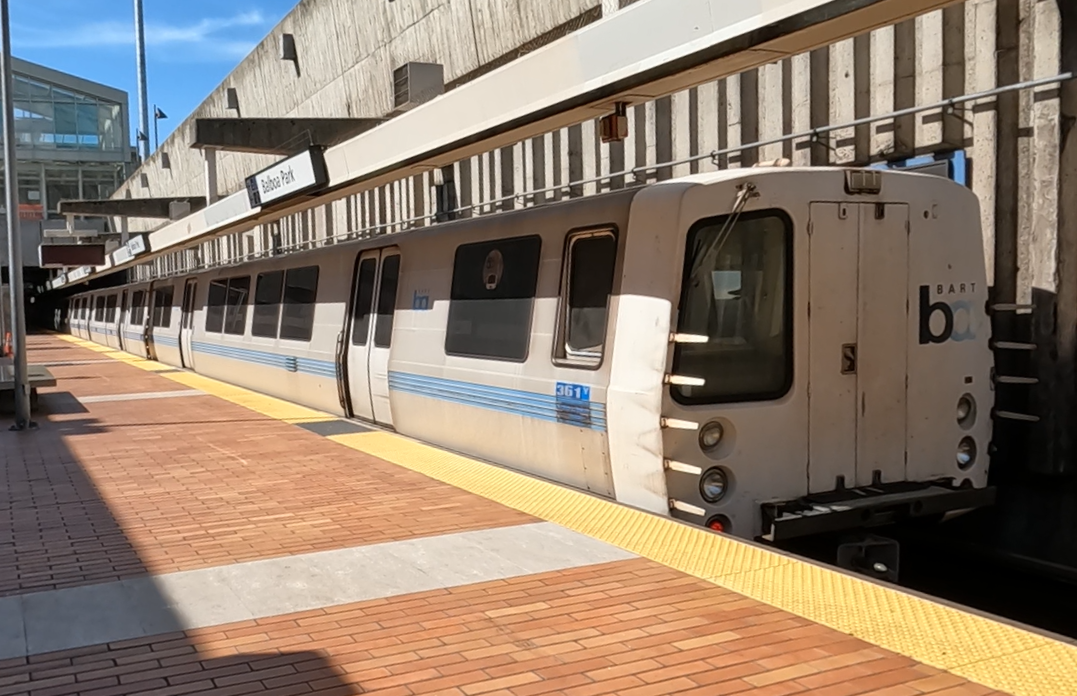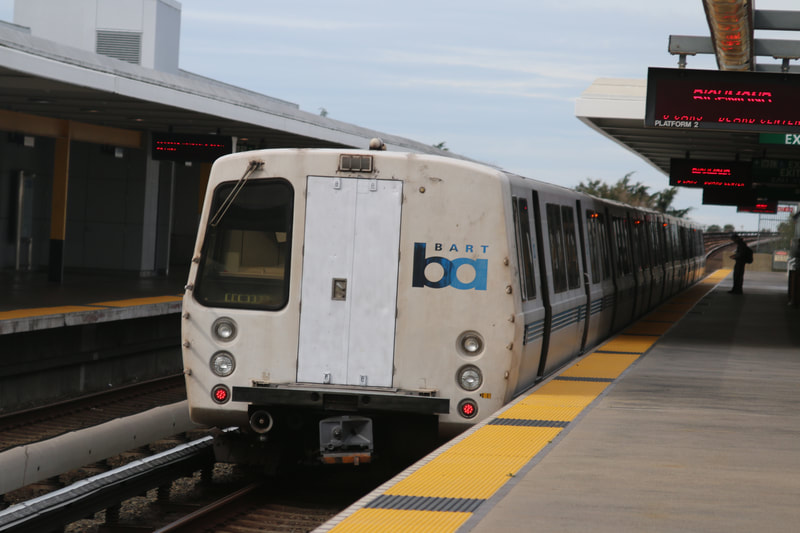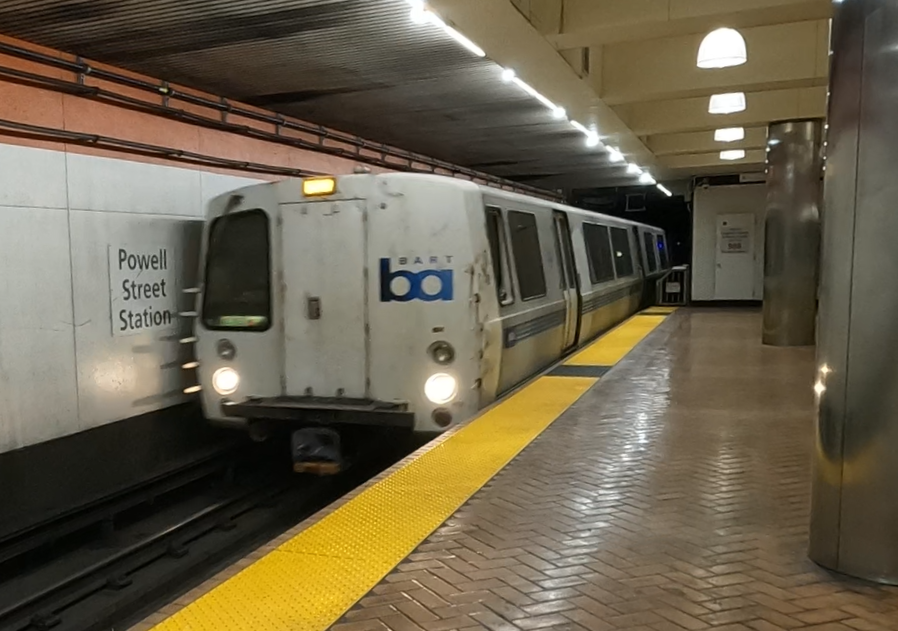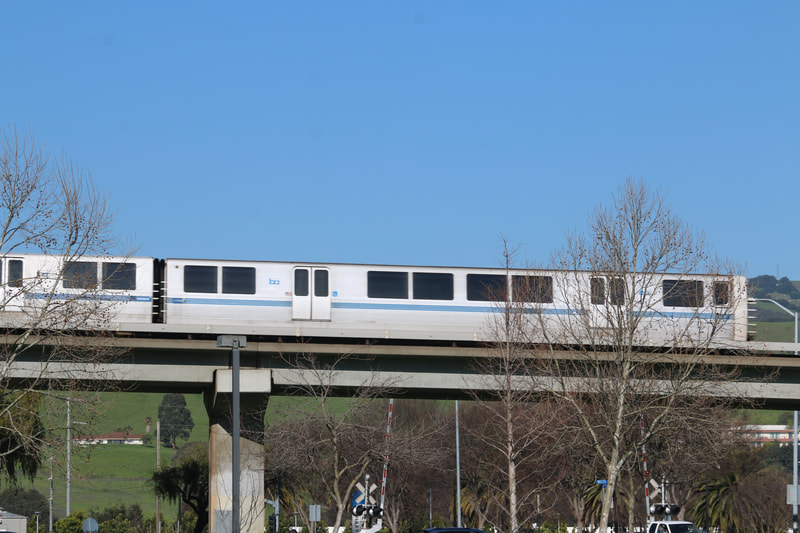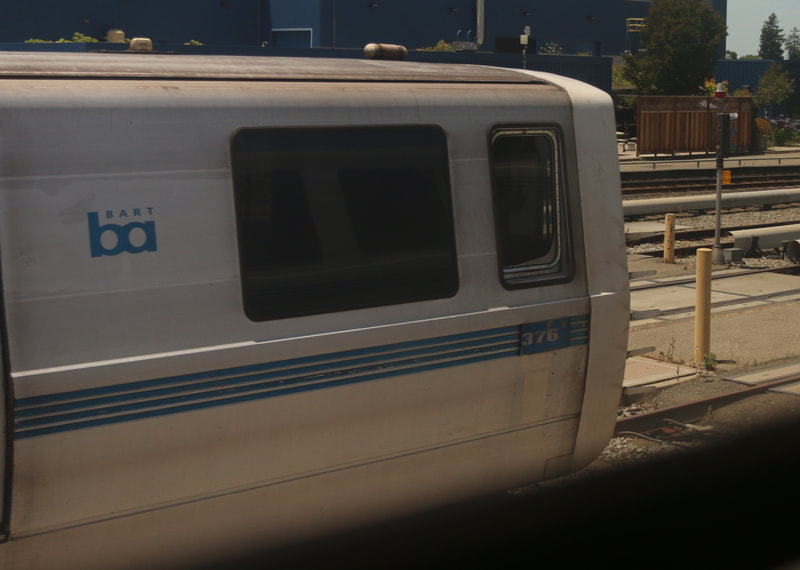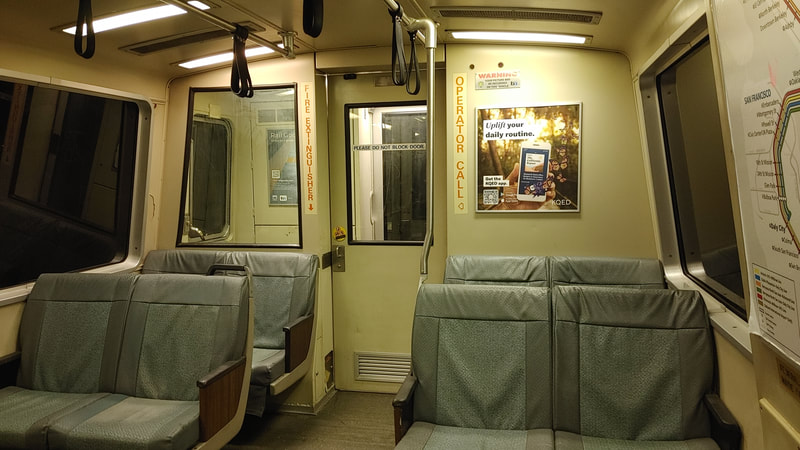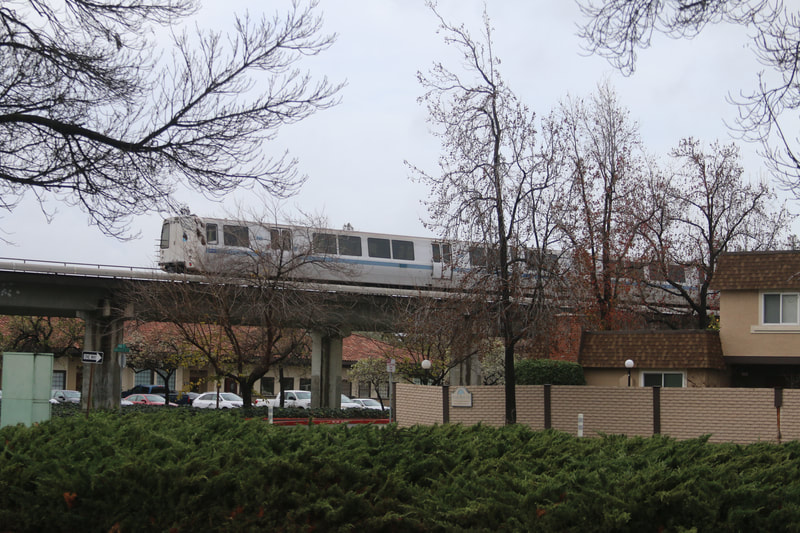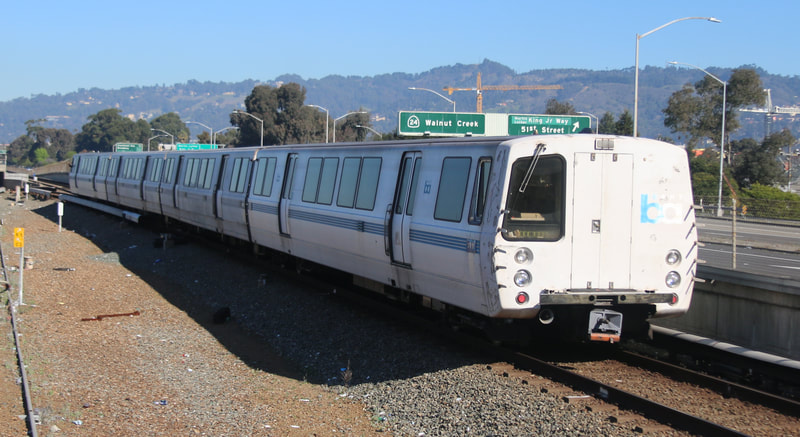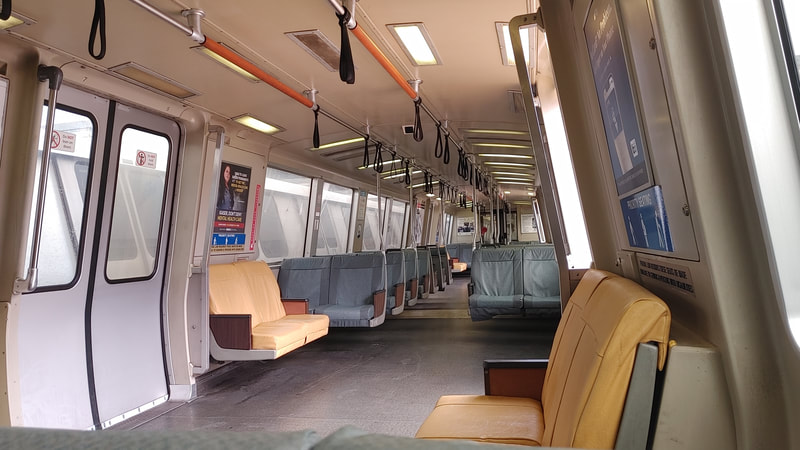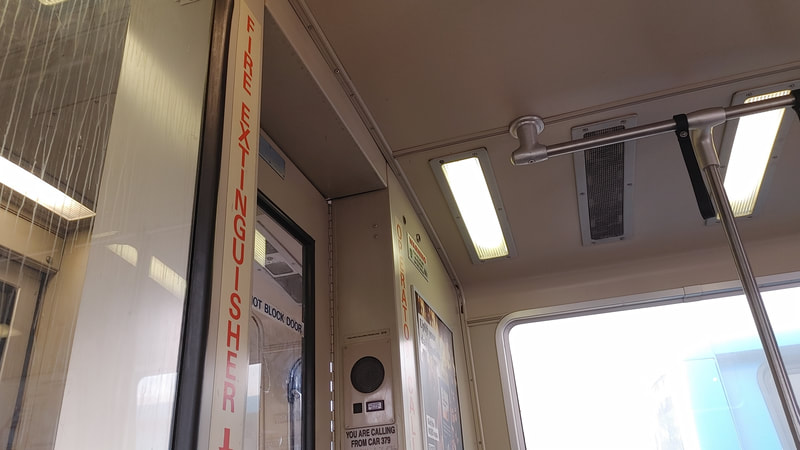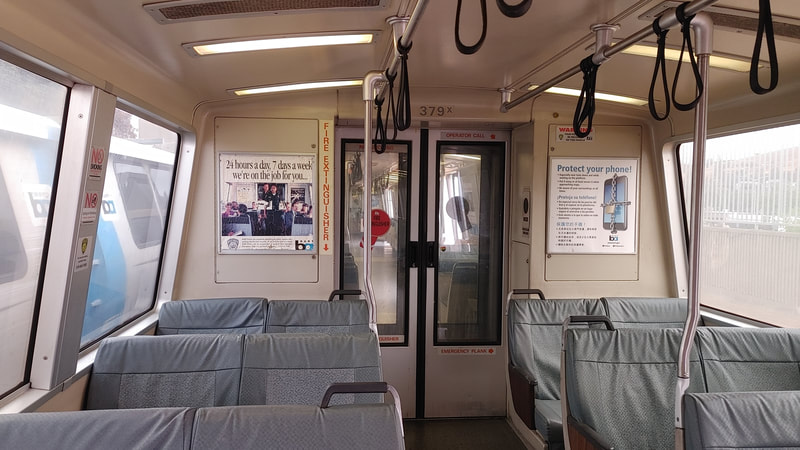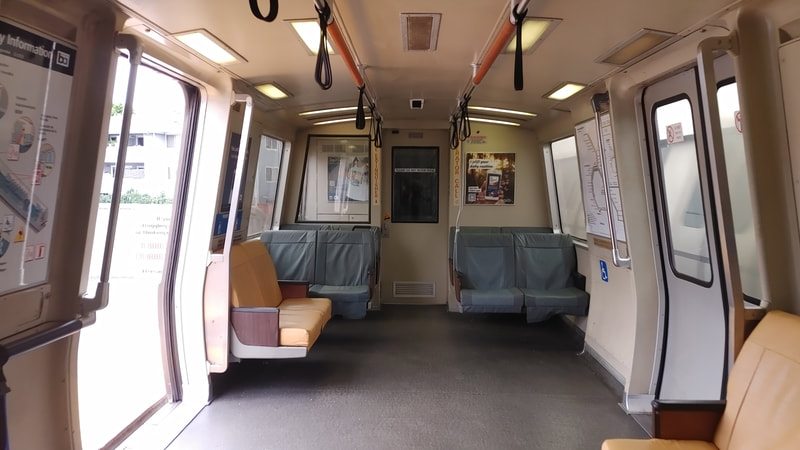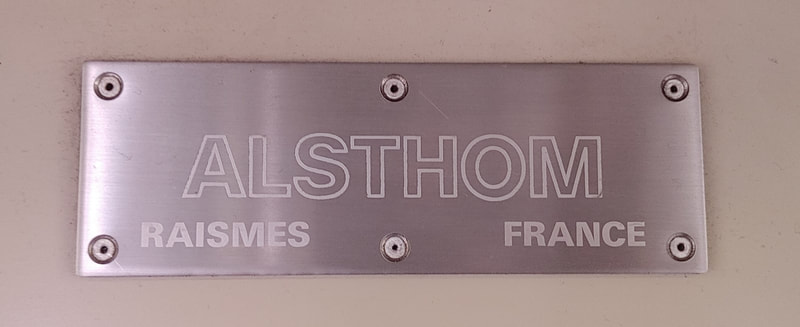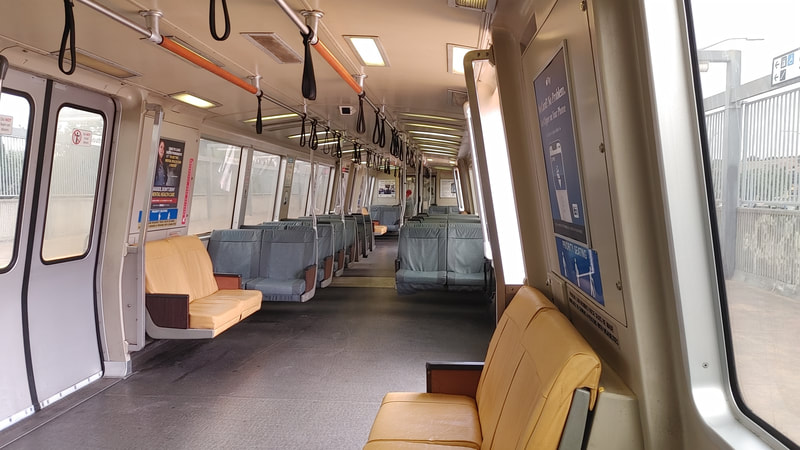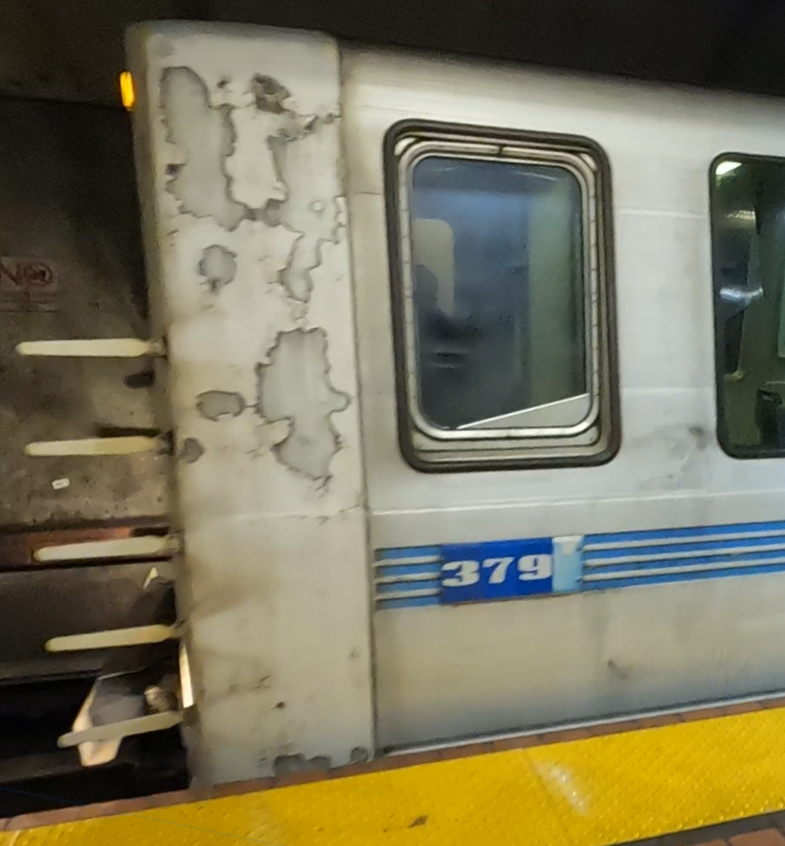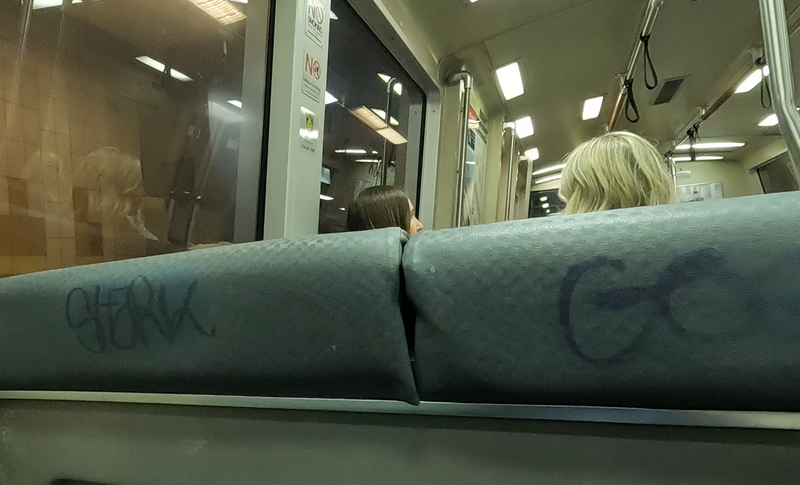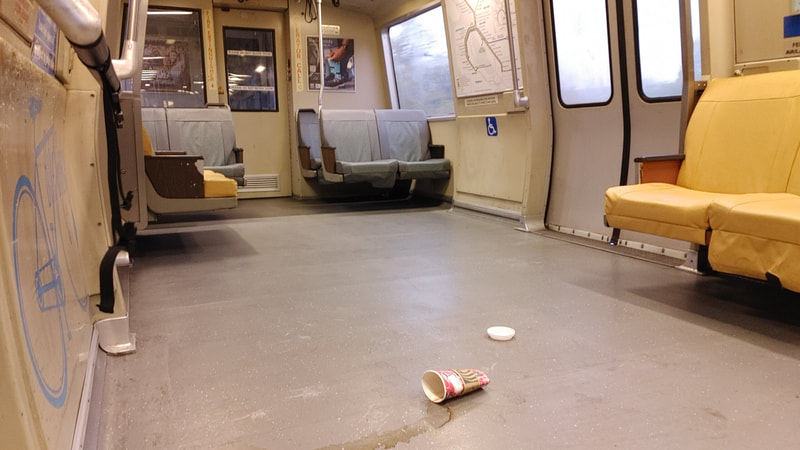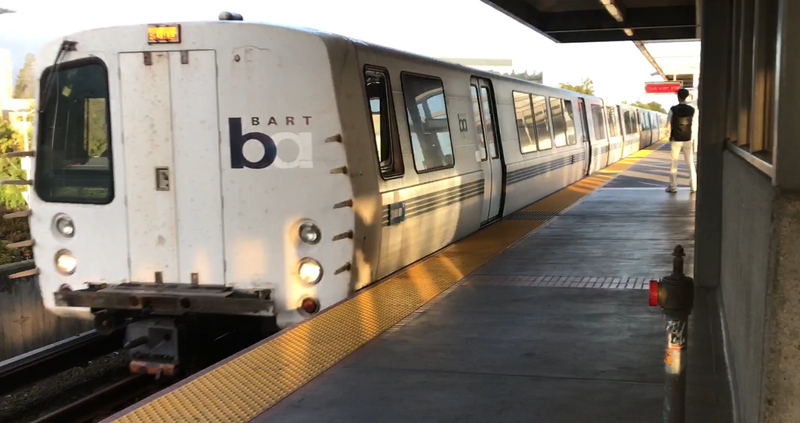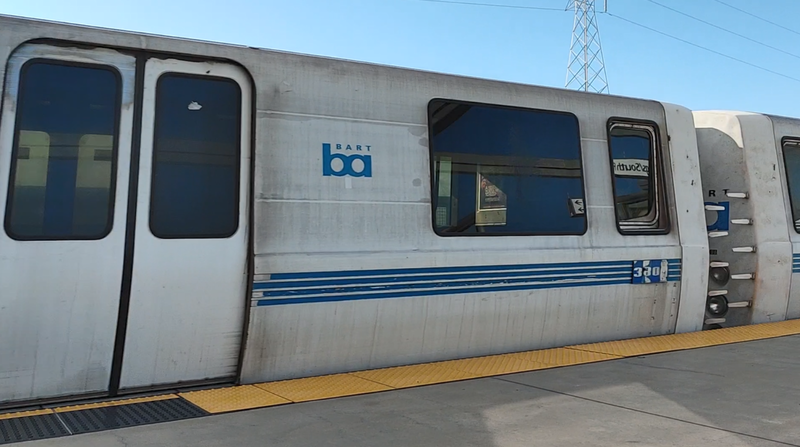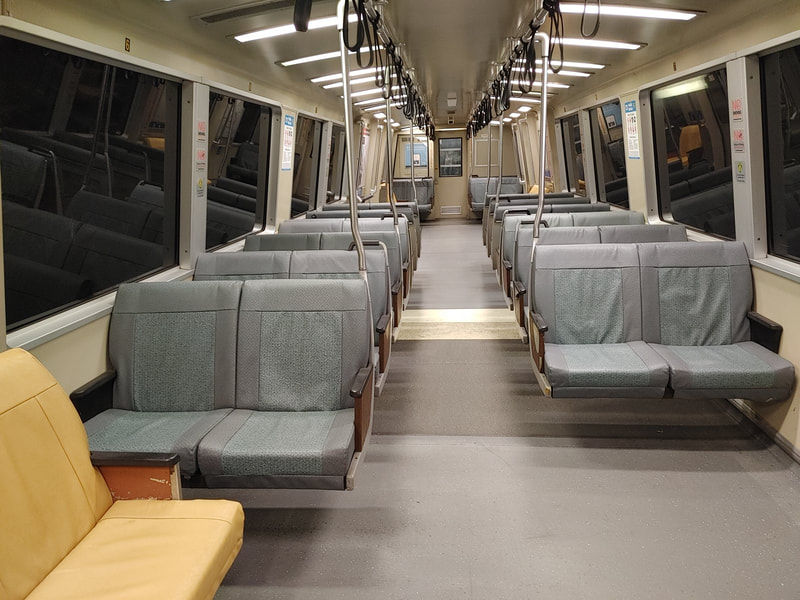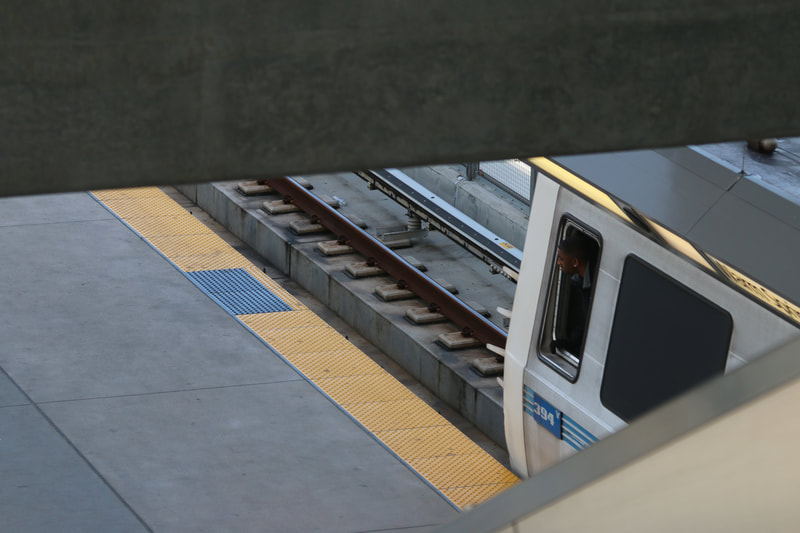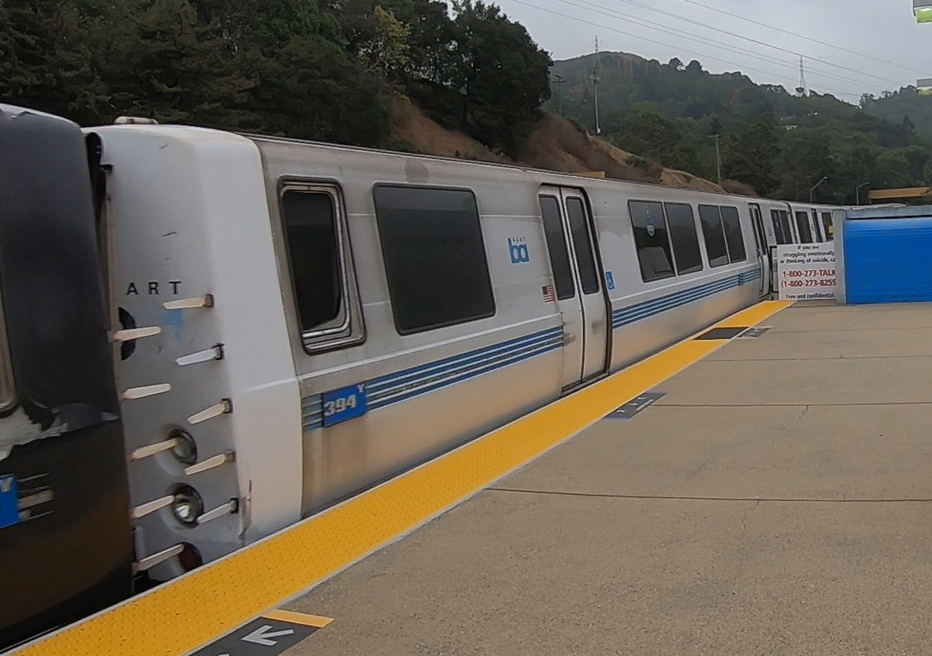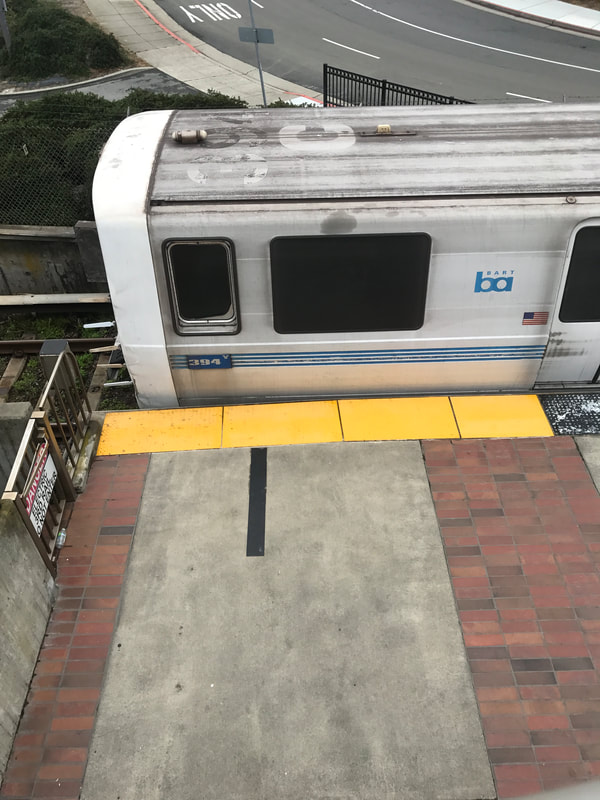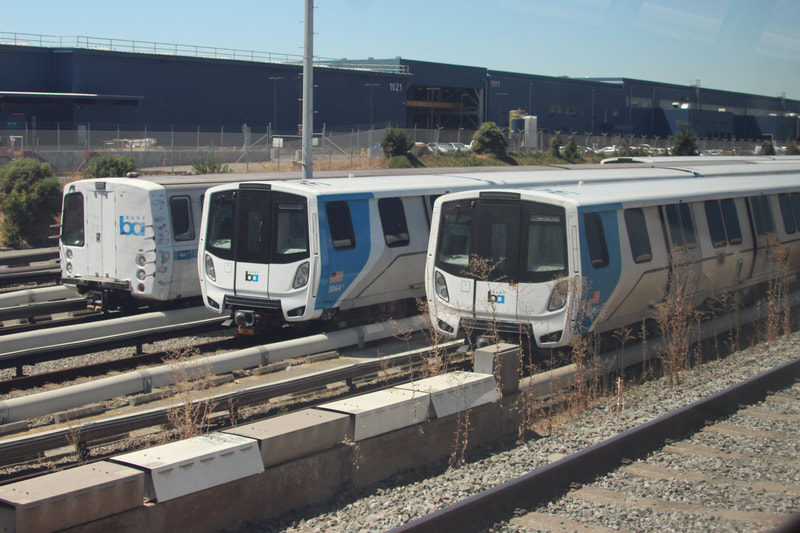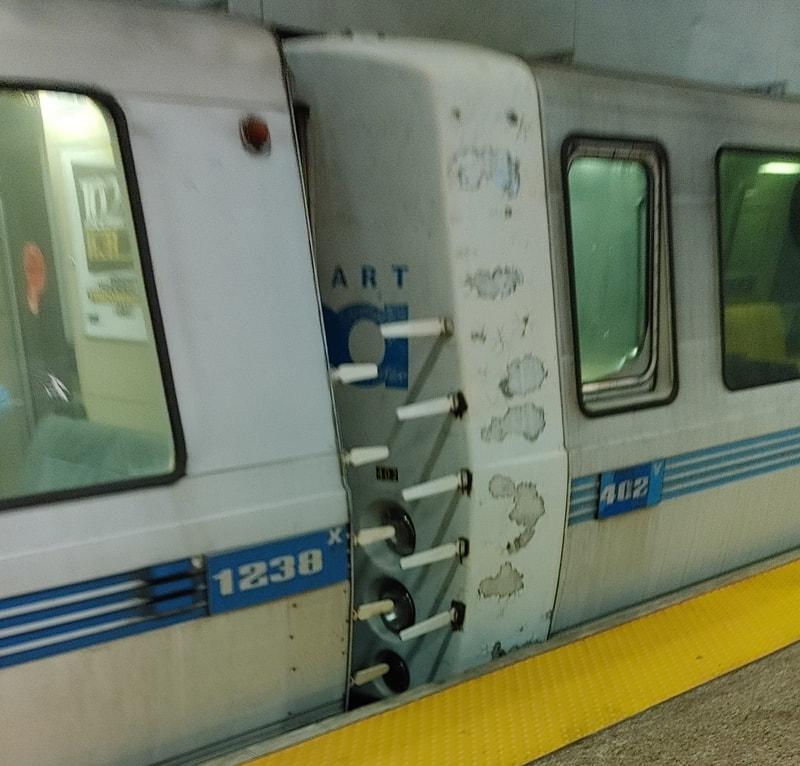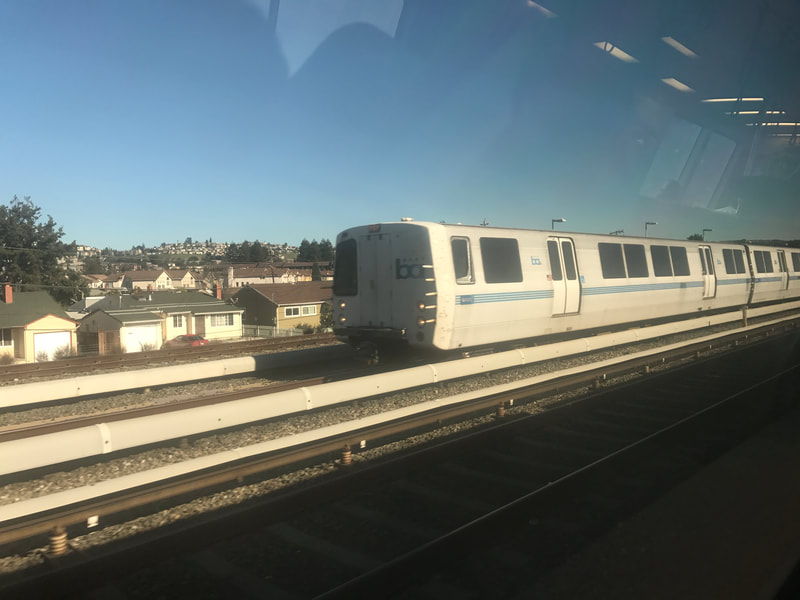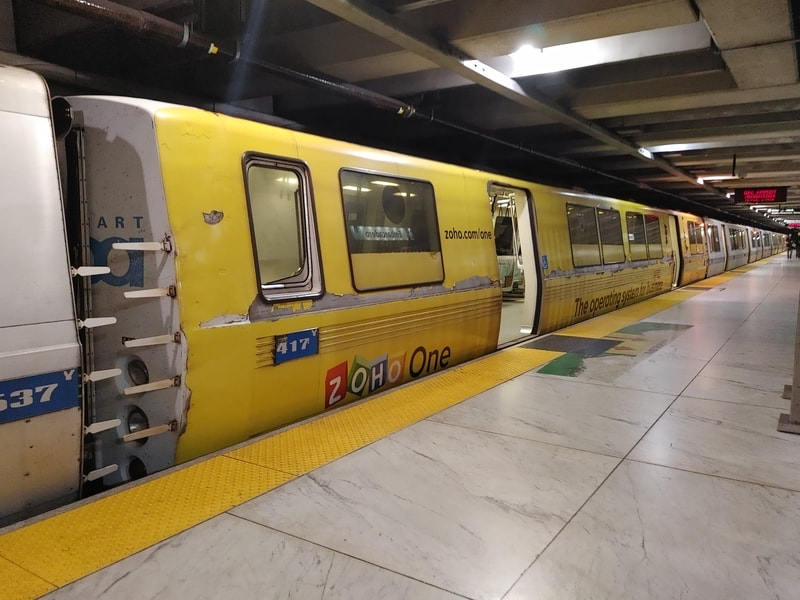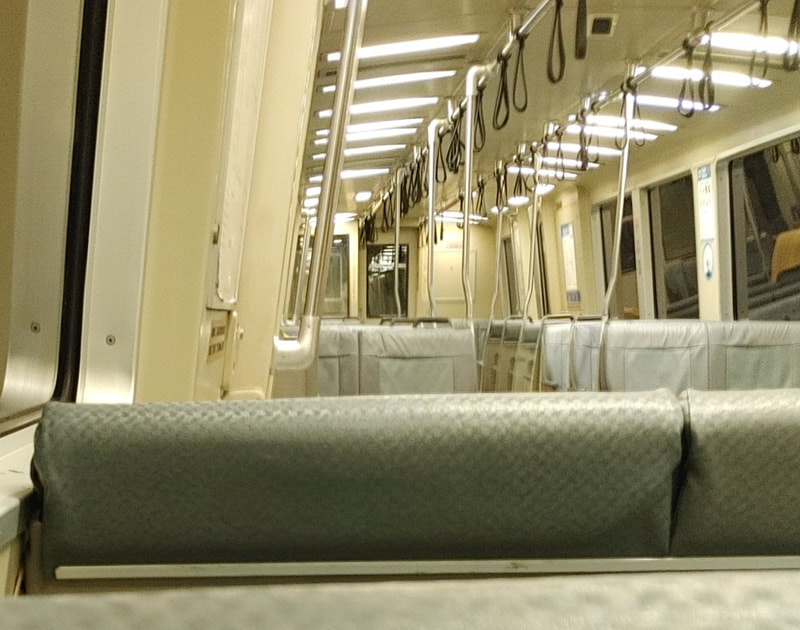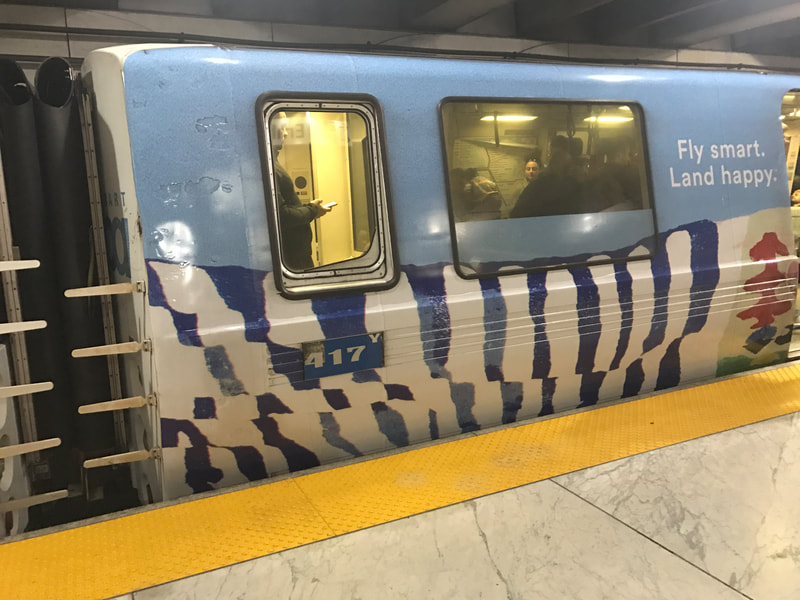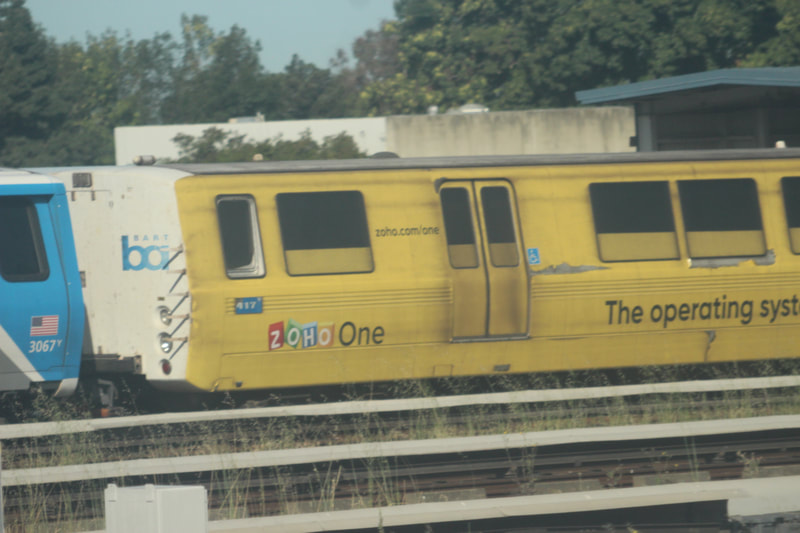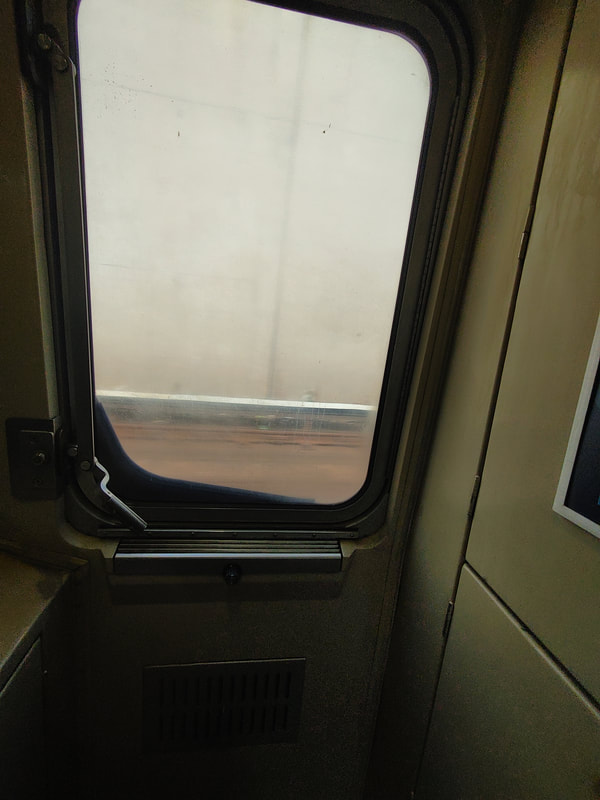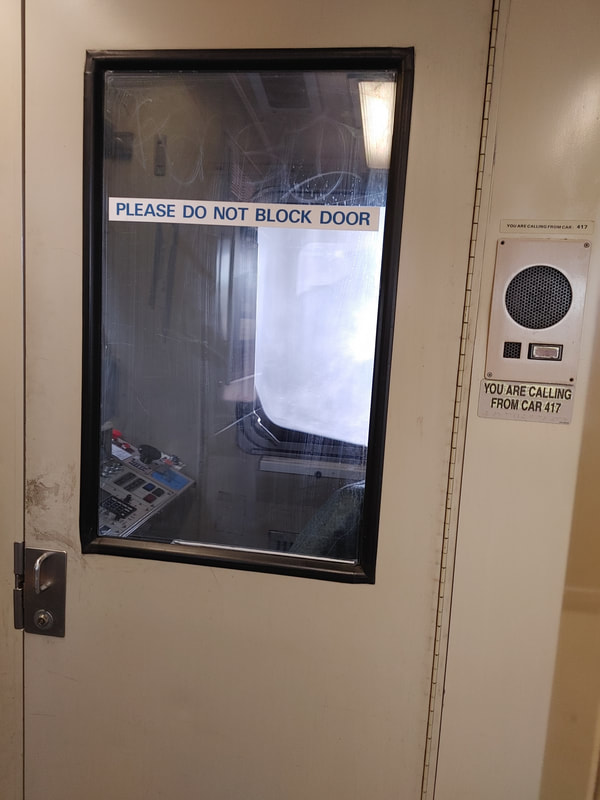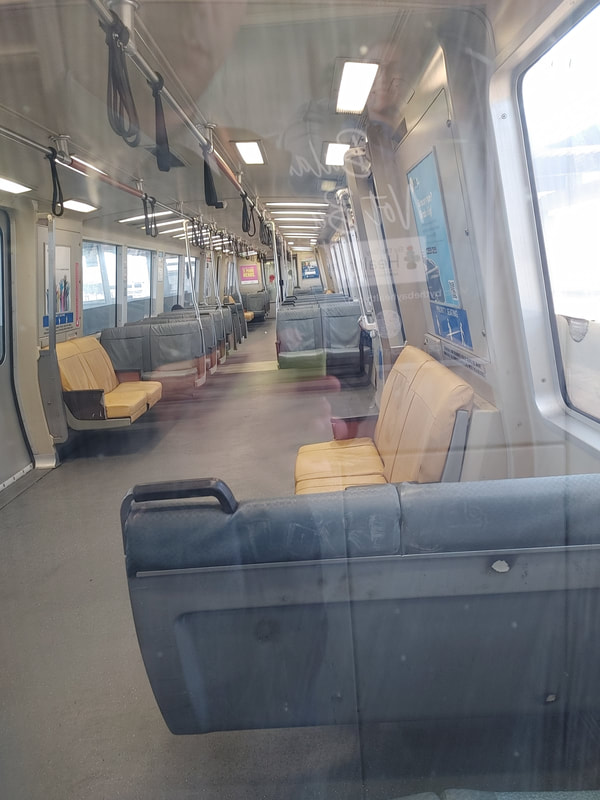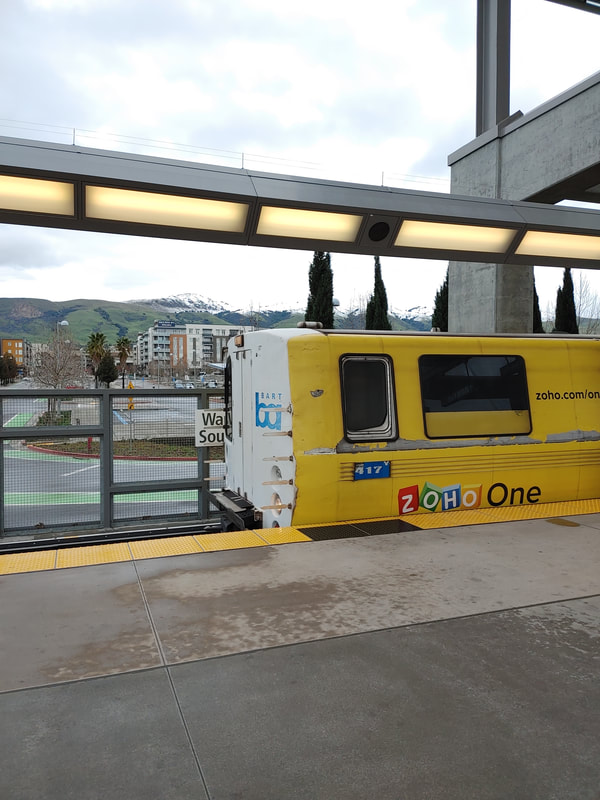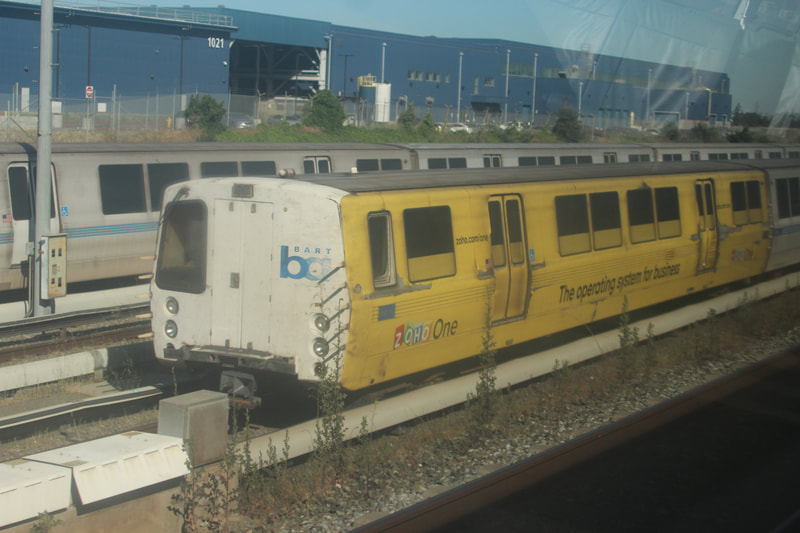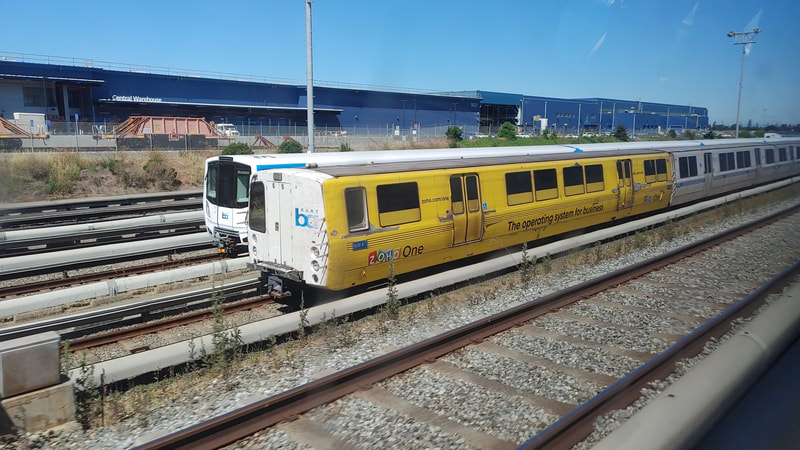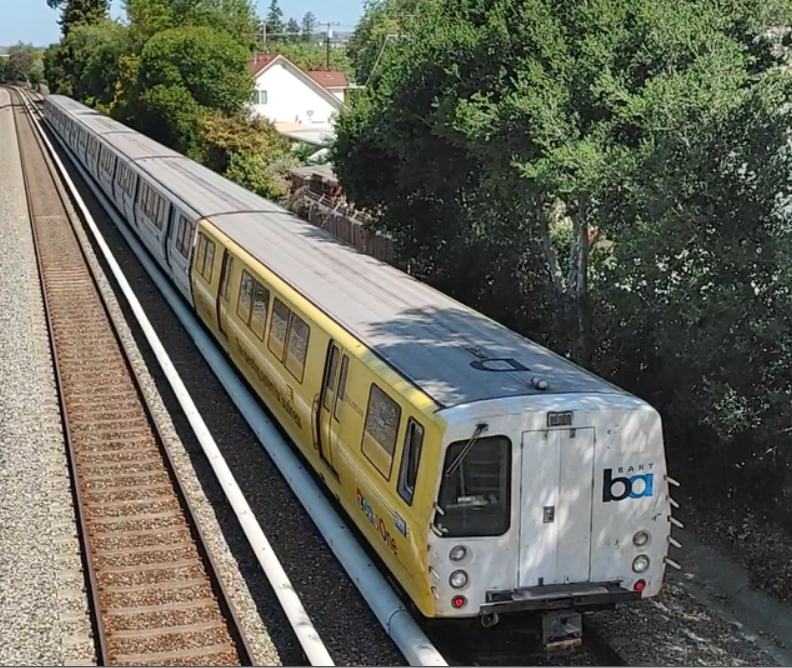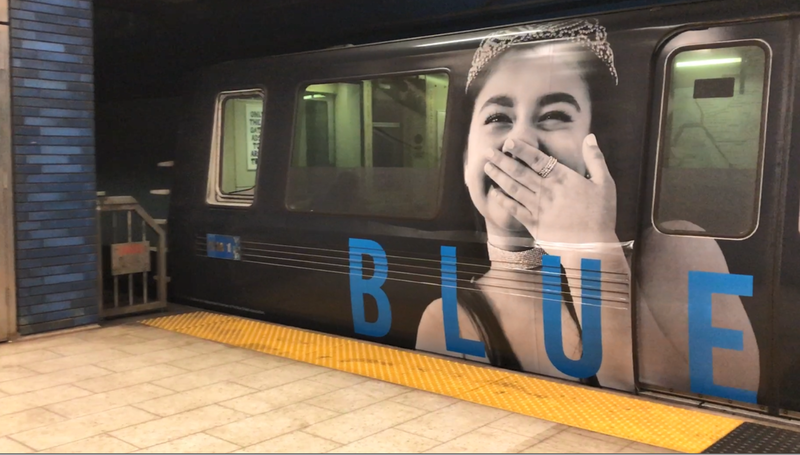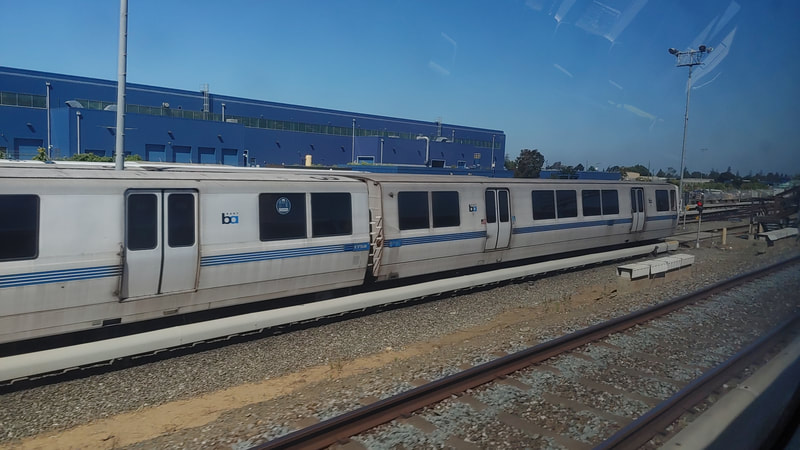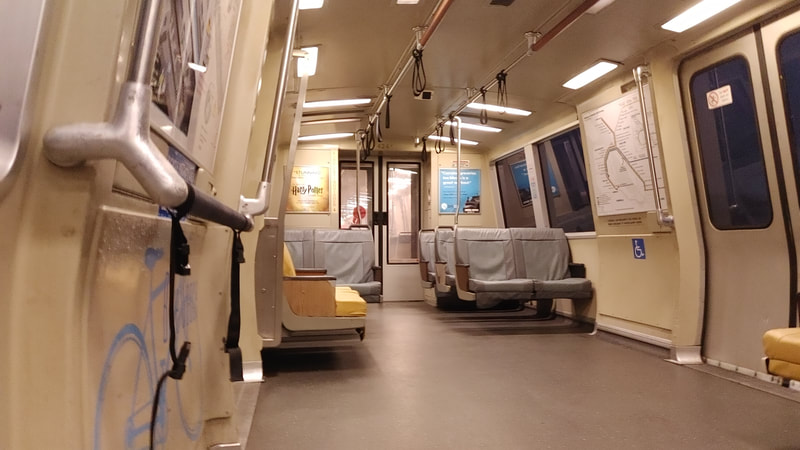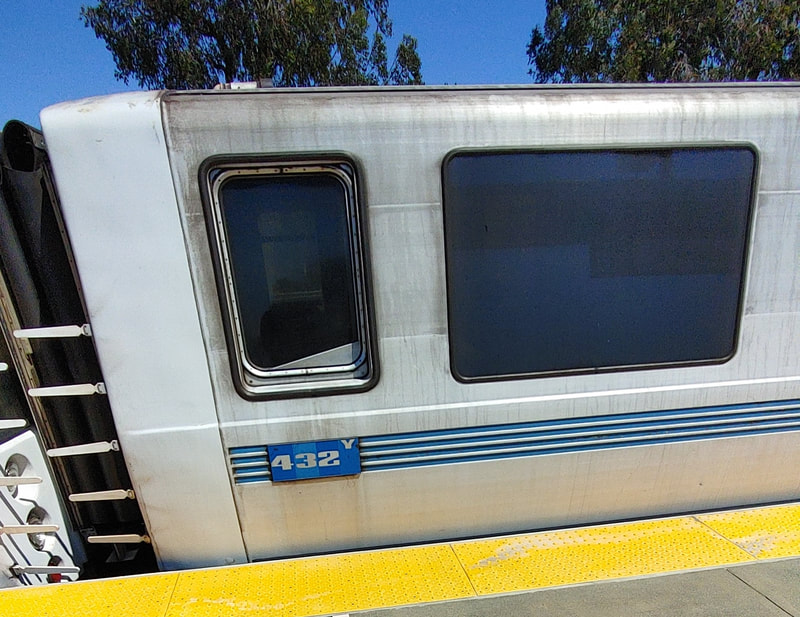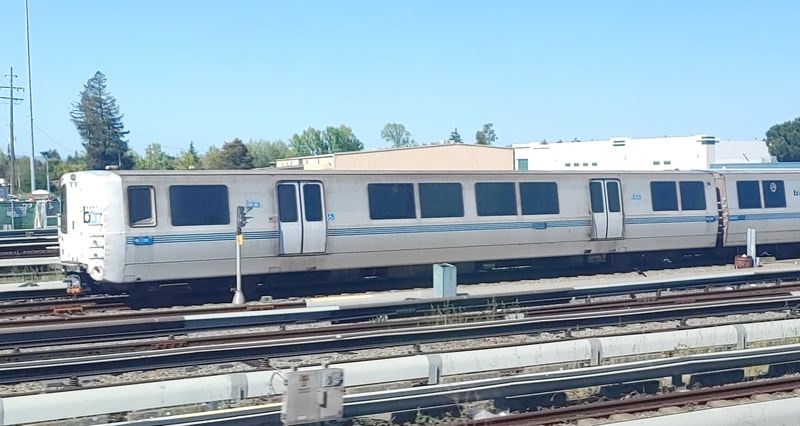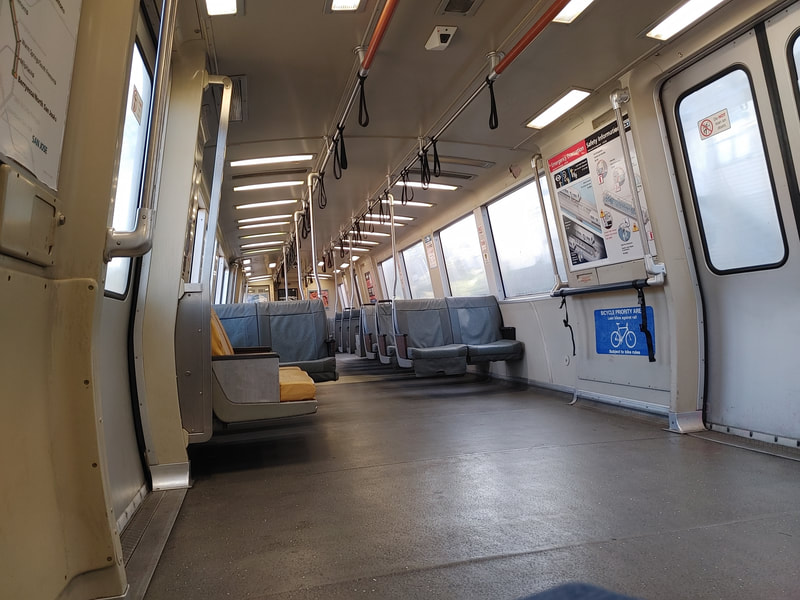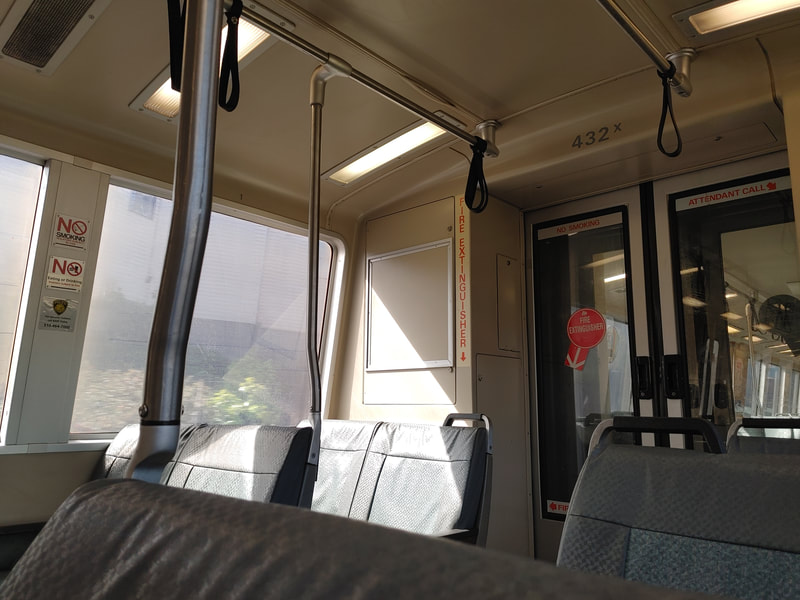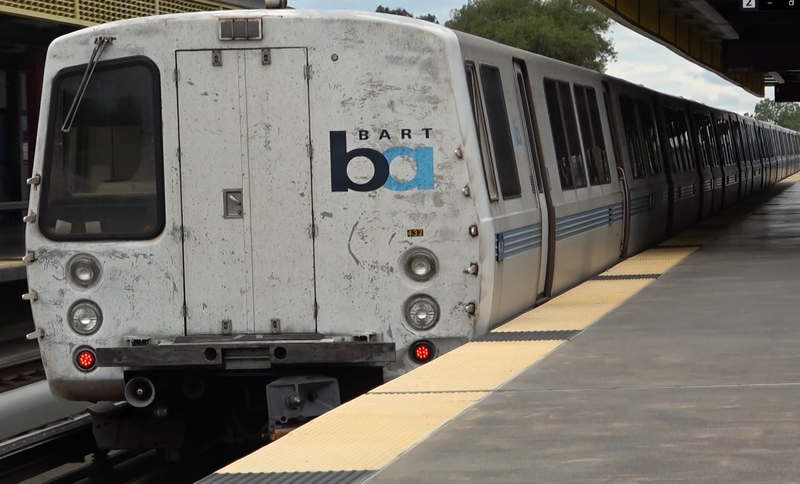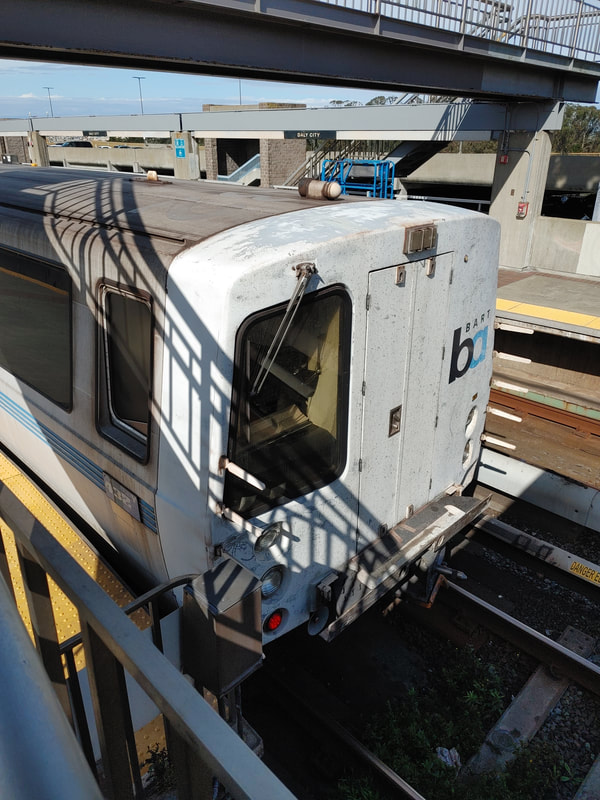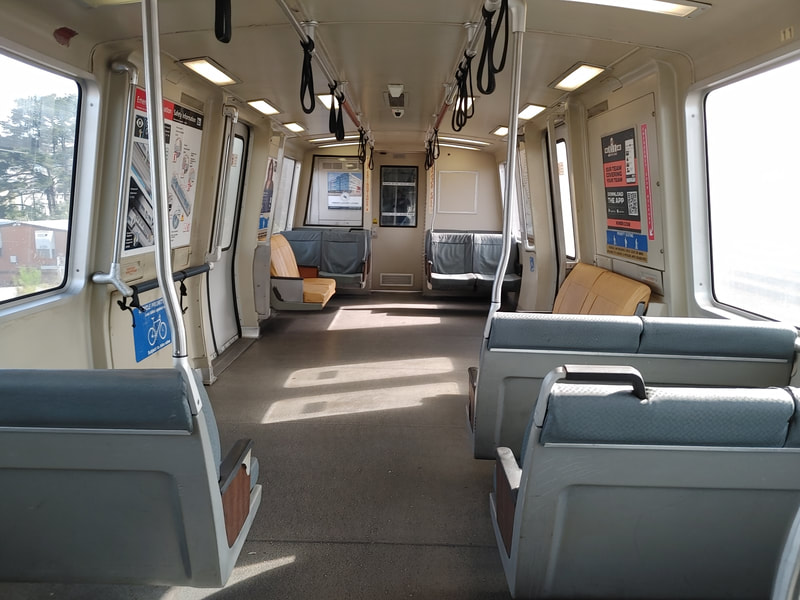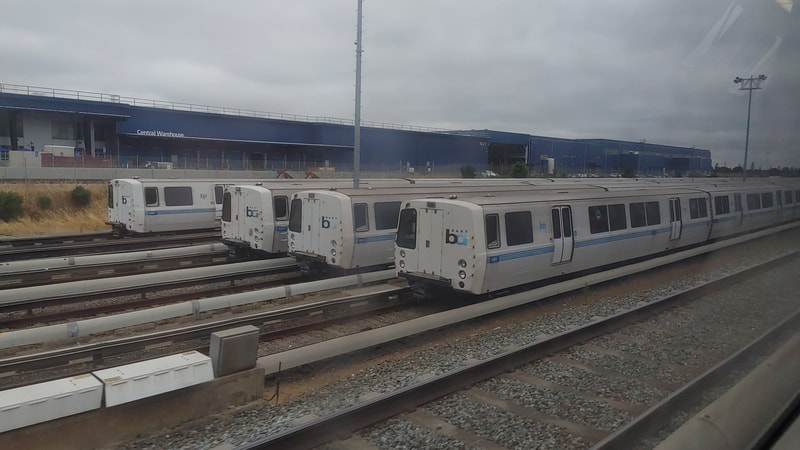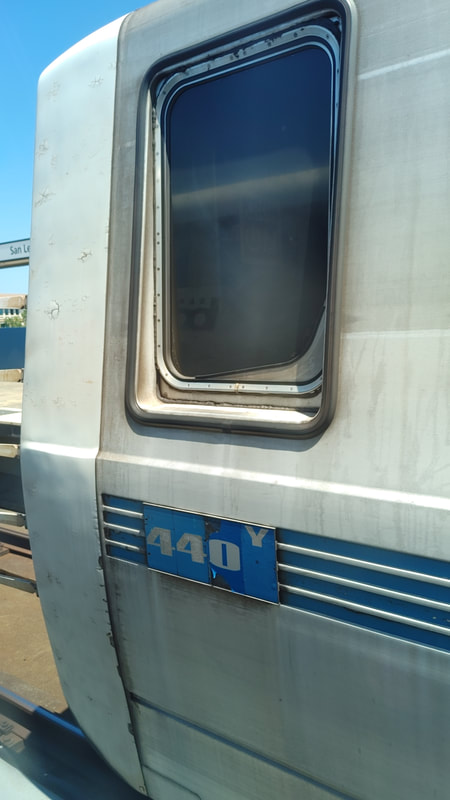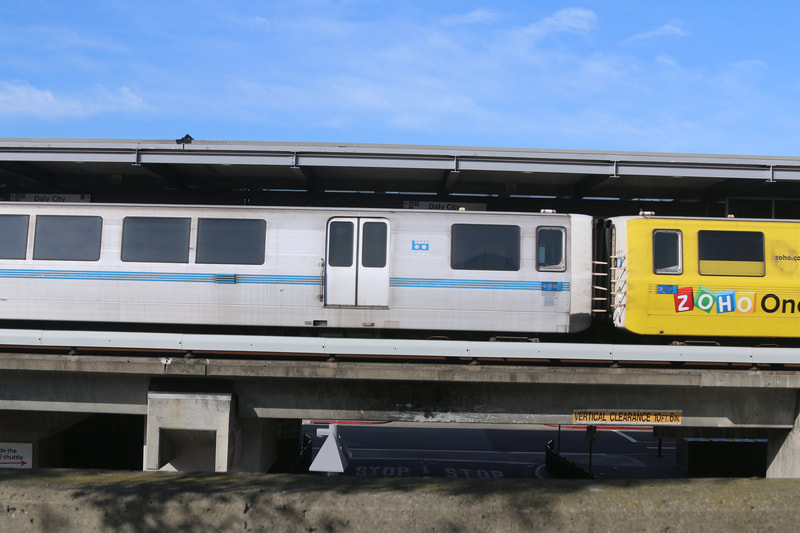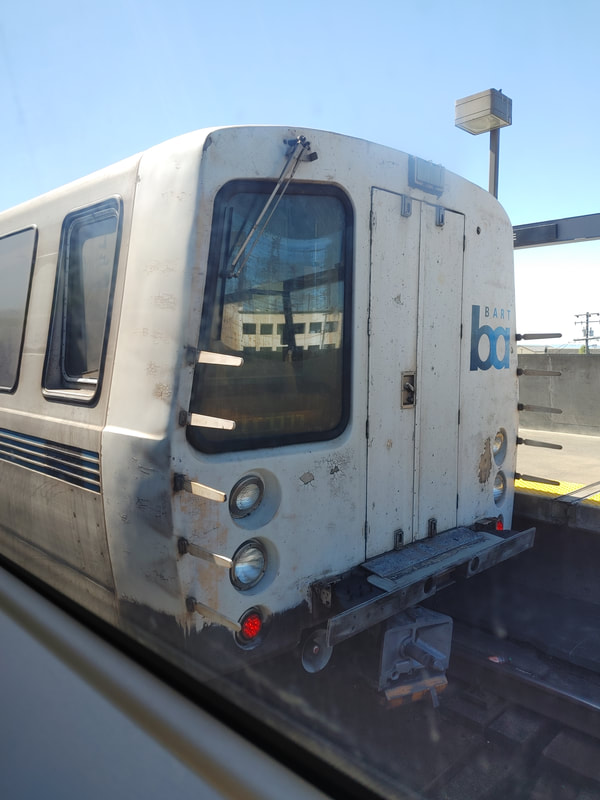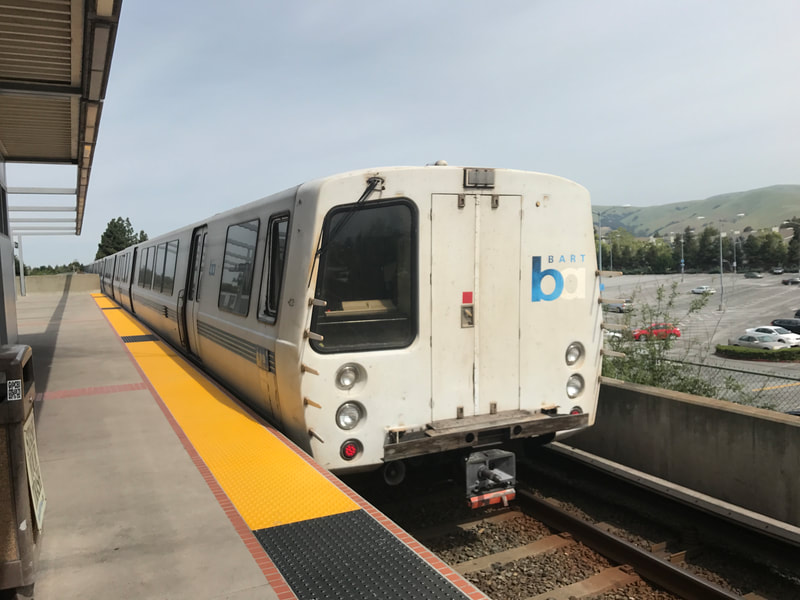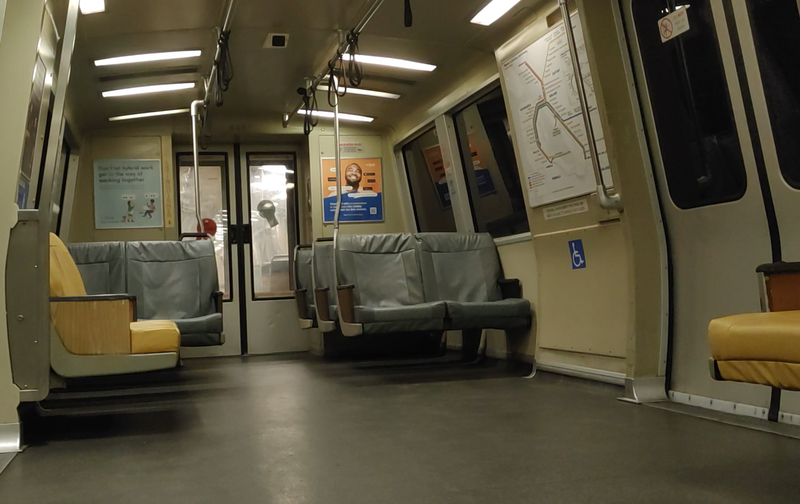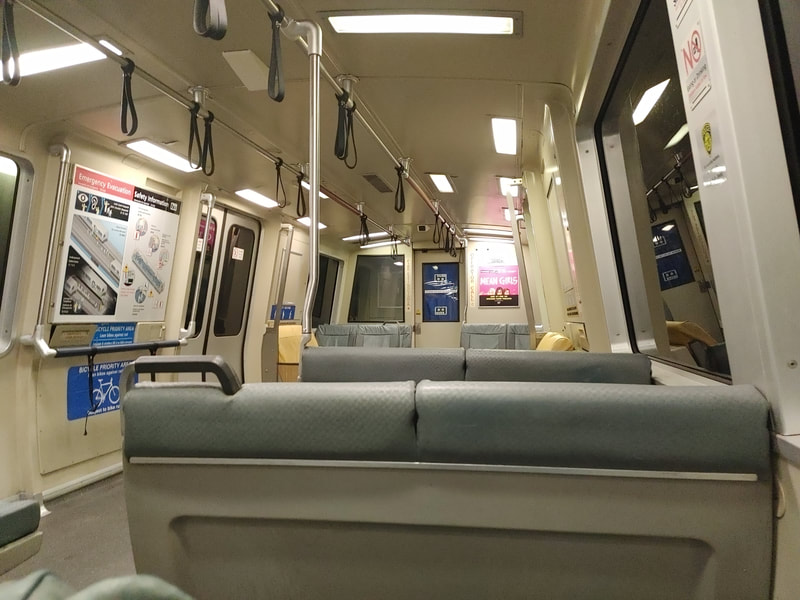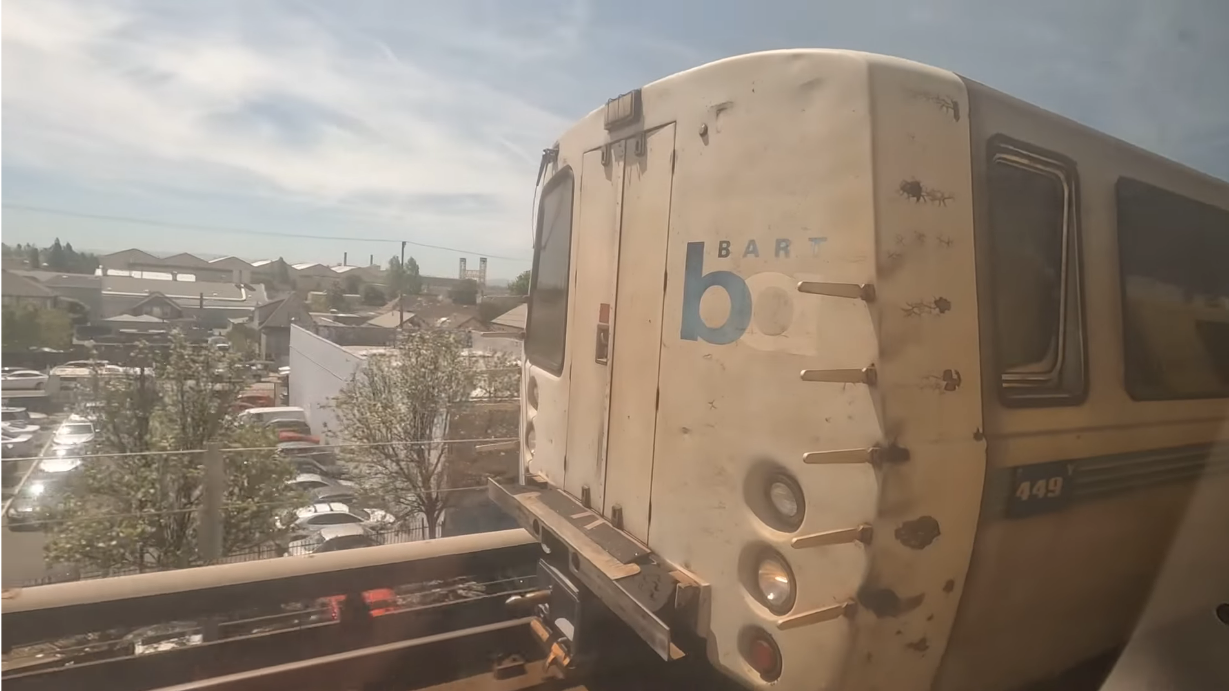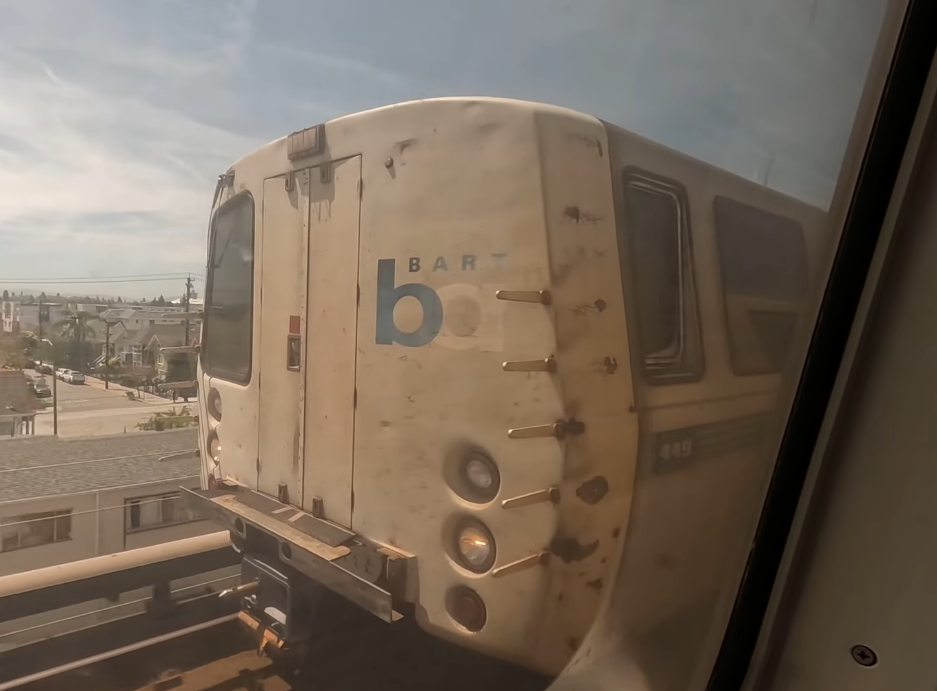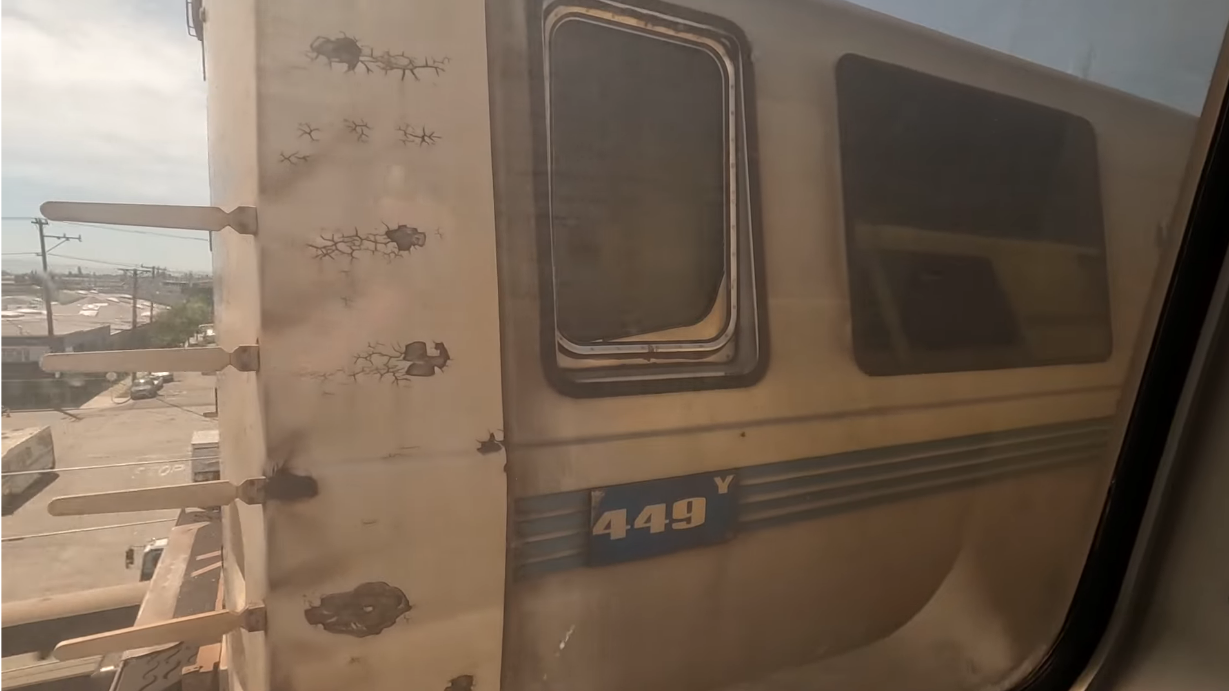Final C Cars left in revenue service until May 15, 2023
|
The combined C1 and C2 fleets (C cars) once totaled 230 cars. To put that in perspective, of the traditional 669 pre-scrapping car count, this was over 1/3 of the legacy fleet, and almost 80% of control cars. It was impossible to provide service without the C cars. The C1 cars were the largest type of C cars, numbering 150 total.
There are/were advantages and limitations with the C cars. |
The C1 cars were built in the late 1980s, and the C2s were built in the mid-1990s, to rectify the issues of train sizing and reliability. Traditionally, long trains ran in the commute periods and short trains ran during off peak periods. Before C cars, trains had to return to the yard to add or remove B cars, resulting in additional time and operator requirements. With C cars, trains could be lengthened (a procedure called a "make") while at the station platform, and could be shortened by uncoupling 2 C cars, splitting a train into two pieces (a procedure called a "break"). As a whole, the C car could run in the middle of the consist, allowing passengers to pass through the (secured) cab, but also easily transformed into a lead car in a matter of a few minutes. The C cars also introduced improvements to carborne ATO equipment and took advantage of reliability improvements from the original Westinghouse propulsion system on the A and B cars.
These advantages of the C cars became in a sense, their disadvantages. Combined with operational changes during the COVID-19 pandemic, it becomes rather clear why they were retired. Their issues included, but were not limited to, the following:
- Flipper doors – unreliable circuity for the flipper doors (movable doors with tubes to allow safe pass-through as a mid-train car, and stored while lead/trailing) made makes/breaks sometimes a gamble if a stubborn car would not recognize its new layout. In turn, the car might have to go out of service. With the onset of COVID and fewer but longer trains all day, they weren't totally needed for their midtrain capabilities.
- Cab side windows – Many a train operator would testify to concerns over the “lift” style cab windows not always working as intended, let alone workplace injuries. All remaining C1 cars have “swing” style cab side windows, for reliability and ergonomics.
- DC propulsion – although standard for the fleet when first introduced, it was the dated, odd-one-out by the time all 439 A and B cars were rebuilt with AC propulsion.
- Side doors – unreliable compared to the rest of the fleet (C2 cars)
- APSE system (auxiliary power supply equipment) – a piece of equipment that converts 1000-volt DC third rail to AC power for air conditioning and other functions, was noted as unreliable. (Major concern with C2 cars in particular)
- Age – there was never a C car-wide rebuilding, as was done with the A and B cars. By the time of their retirement, the C1 cars were in service for about 35 (1988-2023) years, and the C2 cars were in service for about 25 years (1995-2020). To compare, the A and B cars were about 23-30 years old at the time of rebuilding.
This page covers the last couple dozen or so C cars left in service at BART (all C1 cars).
5/19/23 Note - I have not seen any C cars in revenue service as of Thursday 5/18 and Friday 5/19. This page will instead just look at those final cars.
They were the following:
C Cars left on property as of 6/8/23: 8
Each entry goes into detail about each car that's left. Enjoy (or avoid) these cars as you can - time is quickly running out for the old C cars. Soon, we will have come full circle with just a bunch of A and B cars rolling around (and those new-fangled FOTF too). As of the time of this writing, the C1 cars roll on a few trains on the Green and Blue lines, mostly during weekdays.
5/19/23 Note - I have not seen any C cars in revenue service as of Thursday 5/18 and Friday 5/19. This page will instead just look at those final cars.
They were the following:
- 311 (Scrapped)
- 314 (Scrapped)
- 328 (Scrapped)
- 329 To be Preserved at Western Railway Museum
- 334 (Scrapped)
- 339 (Scrapped)
- 343 (Scrapped)
- 349 (Scrapped)
- 350 (Scrapped)
- 354 (Scrapped)
- 357 (Scrapped)
- 361 (Scrapped)
- 365 (Scrapped)
- 376 (Scrapped)
- 379 (Scrapped)
- 380 (Scrapped)
- 394 (Scrapped)
- 402 (Scrapped)
- 417 (Scrapped)
- 421 (Scrapped)
- 424 (Scrapped)
- 432 (Scrapped)
- 440 (Scrapped)
- 449 (Scrapped)
C Cars left on property as of 6/8/23: 8
Each entry goes into detail about each car that's left. Enjoy (or avoid) these cars as you can - time is quickly running out for the old C cars. Soon, we will have come full circle with just a bunch of A and B cars rolling around (and those new-fangled FOTF too). As of the time of this writing, the C1 cars roll on a few trains on the Green and Blue lines, mostly during weekdays.
Photos below: Click on each photo to view the full size image.
311
Missing all exterior number plates 4/23
Entered service in 1988, rolled over 3.2 million miles as of 10/22
Final C1 car scrapped.
Entered service in 1988, rolled over 3.2 million miles as of 10/22
Final C1 car scrapped.
314
Former Zoho One, Zoom.us ad wraps
Entered service in 1988, rolled 2,961,390 miles.
(Scrapped)
Entered service in 1988, rolled 2,961,390 miles.
(Scrapped)
328
Entered service in 1988, rolled over 3.13 million miles as of 10/22
Scrapped
Scrapped
329
Entered service in 1988, rolled over 3.04 million miles as of 10/22
To be preserved at Western Railway Museum
To be preserved at Western Railway Museum
334
Entered service in 1989, rolled over 3.07 million miles as of 10/22.
Scrapped
Scrapped
339
Entered service in 1988, rolled over 3.29 million miles as of 10/22
(Scrapped)
(Scrapped)
343
Missing Y end right side car number plate. Former Zoho One, United Airlines ad wraps
Entered service in 1988, rolled over 3.39 million miles as of 10/22
Scrapped.
Entered service in 1988, rolled over 3.39 million miles as of 10/22
Scrapped.
349
Former Zoho One ad wrap car. Regional Measure 2 Demonstration Car.
Entered service in 1988, rolled over 3.43 million miles as of 10/22
Scrapped 6/2/23.
Entered service in 1988, rolled over 3.43 million miles as of 10/22
Scrapped 6/2/23.
350
Ex Kaiser, Ford, and Toll Brothers ad wrap car.
Entered service in 1989, rolled over 3.21 million miles as of 10/22
(Scrapped)
Entered service in 1989, rolled over 3.21 million miles as of 10/22
(Scrapped)
354
Ex Zoom.us ad wrap car.
Entered service in 1988, rolled over 3.11 million miles as of 10/22
Scrapped
Entered service in 1988, rolled over 3.11 million miles as of 10/22
Scrapped
357
Missing YR number plate 4/23
Entered service in 1989, rolled over 3.13 million miles as of 10/22
(Scrapped)
Entered service in 1989, rolled over 3.13 million miles as of 10/22
(Scrapped)
361
Missing YR number plate 4/23
Entered service in 1988, rolled over 3 million miles as of 10/22. Brake shoe smoldering, Union City 3/7/19.
Scrapped.
Entered service in 1988, rolled over 3 million miles as of 10/22. Brake shoe smoldering, Union City 3/7/19.
Scrapped.
365
Entered service in 1989, rolled over 3.17 million miles as of 10/22
(Scrapped)
(Scrapped)
376
Entered service in 1989, rolled over 3.03 million miles as of 10/22
(Scrapped)
(Scrapped)
379
Entered service in 1989, rolled over 3.06 million miles as of 10/22
Scrapped.
Scrapped.
380
Entered service in 1988, rolled over 2.74 million miles as of 10/22
(Scrapped)
(Scrapped)
394
Entered service in 1989, rolled over 3.17 million miles as of 10/22.
Scrapped 5/22.
Scrapped 5/22.
402
Entered service in 1989, rolled over 3.18 million miles as of 10/22.
Listed on roster as of 5/23, but not seen personally in service in a couple months.
Listed on roster as of 5/23, but not seen personally in service in a couple months.
417
Last Zoho One ad wrap C1 car "Zoho-mobile".
Ex Alaska Airlines and Kaiser ad wrap car.
Entered service in 1989, rolled over 3.03 million miles as of 10/22
Scrapped
Ex Alaska Airlines and Kaiser ad wrap car.
Entered service in 1989, rolled over 3.03 million miles as of 10/22
Scrapped
421
Entered service in 1989, rolled over 3.08 million miles as of 10/22. Zoho One Ad wrap 2020-2022
Listed on roster as of 5/23, but not seen personally in service in a couple months.
Scrapped
Listed on roster as of 5/23, but not seen personally in service in a couple months.
Scrapped
424
Ex Zoho One, Kaiser, and Ford ad wrap car.
Entered service in 1989, rolled over 2.85 million miles as of 10/22
Scrapped
Entered service in 1989, rolled over 2.85 million miles as of 10/22
Scrapped
432
Entered service in 1989, rolled over 3.38 million miles as of 10/22
Scrapped.
Scrapped.
440
Lower (under floor) cab exterior painted black 2/19, 4/23
Missing YR number plate 4/23
Entered service in 1990, rolled over 3.12 million miles as of 10/22
Scrapped
Missing YR number plate 4/23
Entered service in 1990, rolled over 3.12 million miles as of 10/22
Scrapped
449
Entered service in 1990, rolled over 2.98 million miles as of 10/22
(Scrapped)
(Scrapped)
Last updated: 6/19/23, 10/2/23

